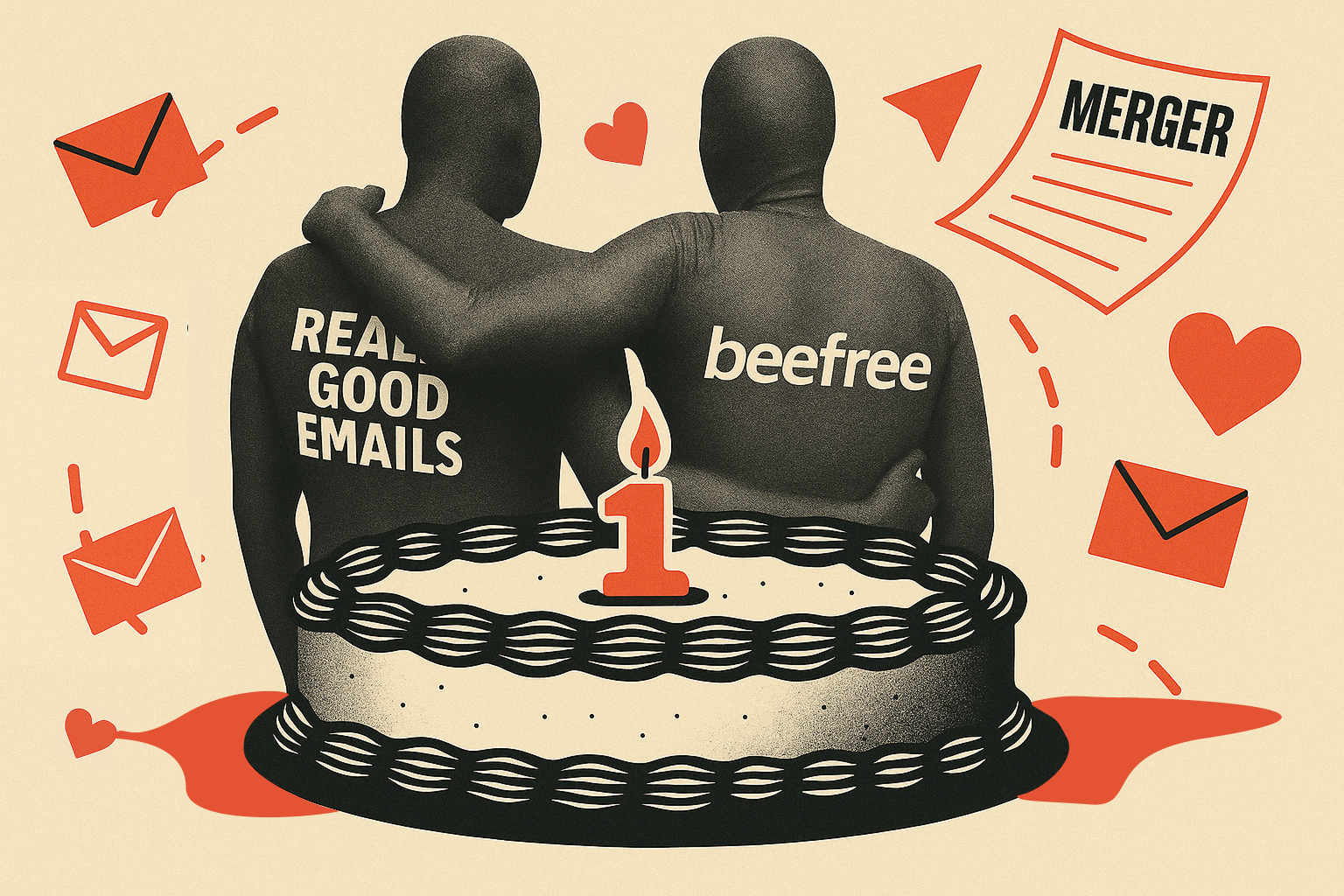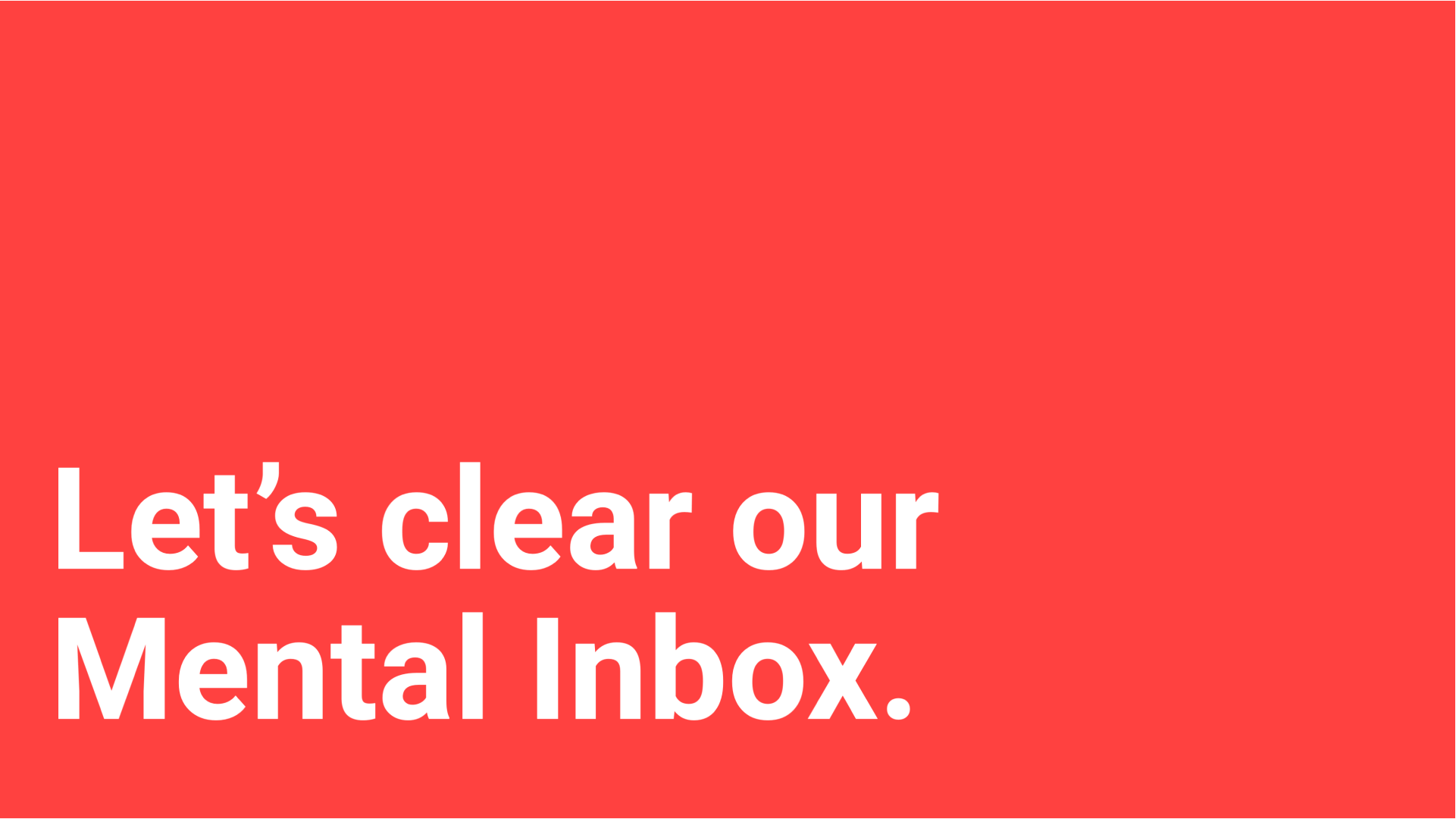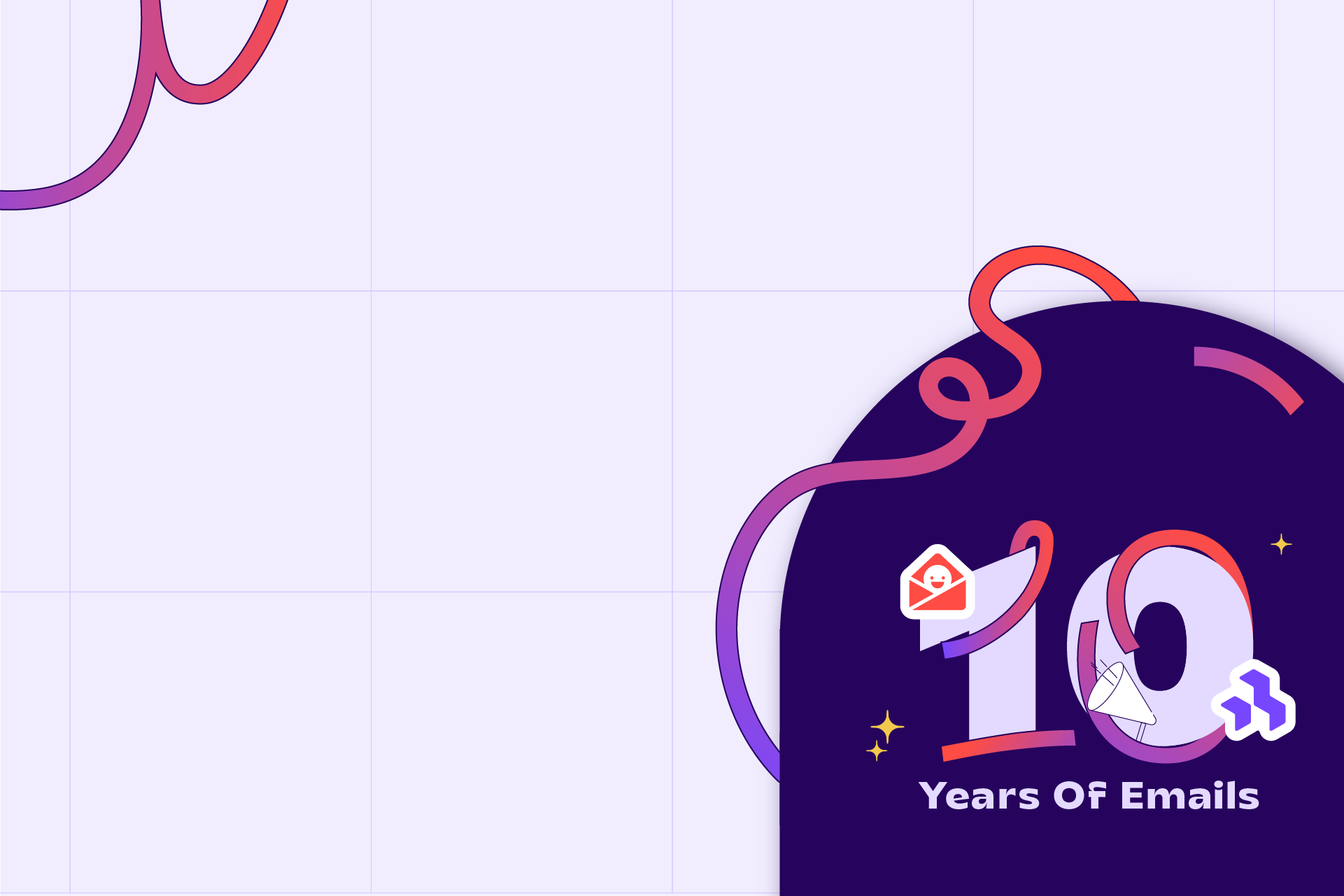Has anybody seen Small Time Crooks by Woody Allen? No? Small Time Crooks is a fantastic movie. We're all going to be inside for a while, so watch that. It's a great movie where Woody Allen is a New Jersey guy, and he's got out of jail for bank robbery, so the first thing he starts doing once he gets out is to start planning the next one.
His wife is in on it, and long story short, they end up not robbing a bank but instead starting a cookie company. This company goes gangbusters, and she is still kind of a poor low class, New Jersey gal, but she has to figure out how to be like a wealthy, rich, cool person. So, she memorizes all the A's in the alphabet, and she uses all the A's at all the parties, and amalgamation is one of those words. It's a good movie, watch it.
All right, in all seriousness, I'm excited to be here. The preparation I've done for this talk is a little unusual. The first thing that I decided I needed was an alcoholic dad. The second thing I needed was a difficult childhood with a mom who was emotionally unavailable because of her upbringing, so that makes me a unique bird. Perfectionist parents taught me how to work my ass off, raised me to be an Eagle Scout, and to work hard. I have baggage. Who has baggage here? All right, love that. We should start a baggage company like Away.
So, listen. I had to do that. I had to become an alcoholic, and then I had to quit drinking three and a half years ago, which is incredible, thank you. There are people here who probably need to stop drinking, and there are people here who are suffering from other kinds of addictions. Many of us are addicted to our phones and all sorts of things. Many of us are experiencing all types of panic and anxiety right now. We are addicted to the internal drugstore that happens with anxiety when we feel all that's going on. That's what I'm going to talk about today. That's the preparation I've been doing, plus, you know, putting together some slides.
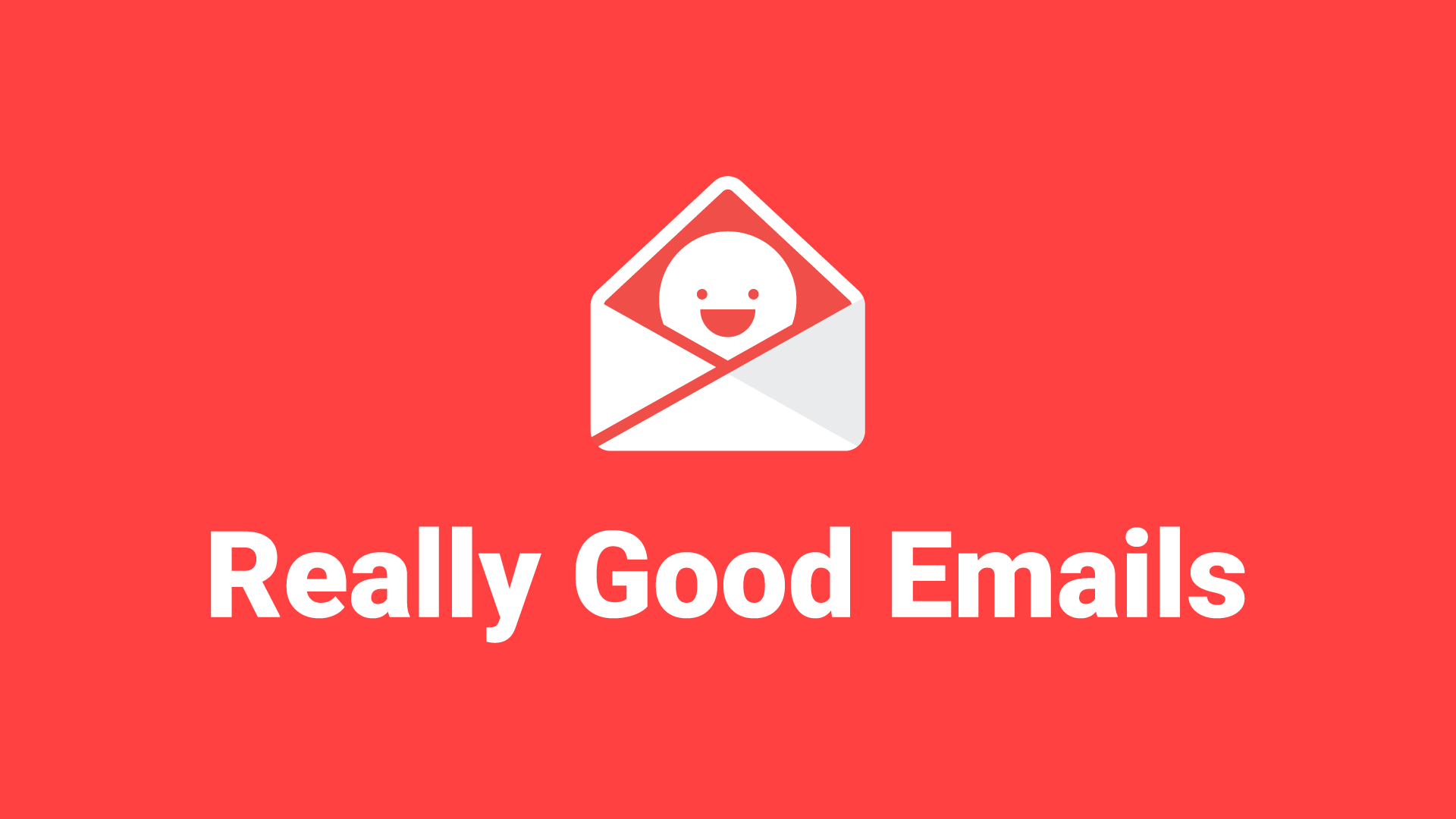
I'm grateful to be here today.

We are @reallygoodemail on Twitter, and I am @whale on all the things.

Look me up if you want. I am an open book. Ask me any email questions, ask me any design questions, ask me questions about alcoholism, addiction, recovery, parenting, and whatever you want. I am available. I like helping people.
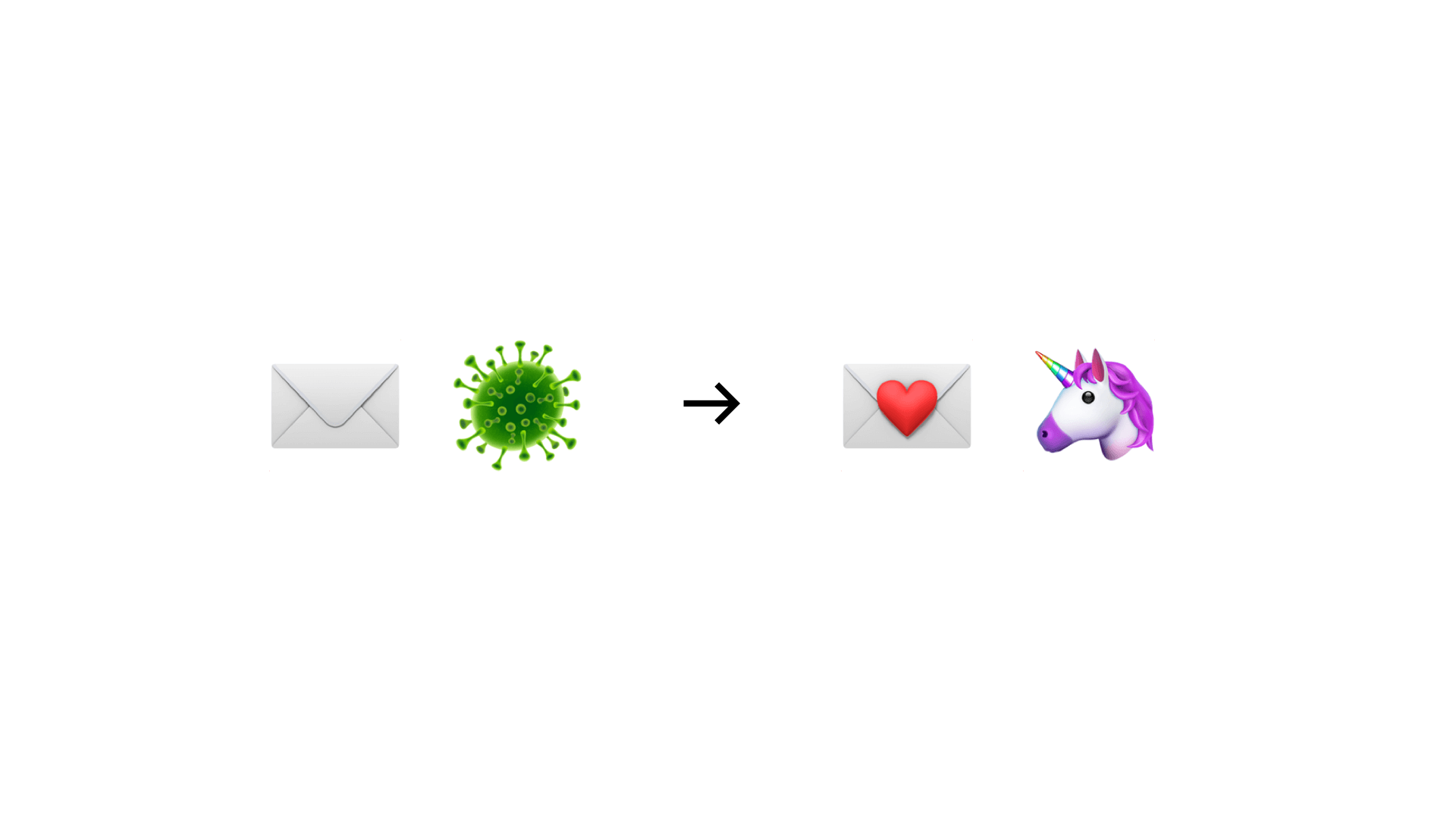
All right, I'm here to turn those kinds of emails (gross emails) into a unicorn. This is my mission in life.
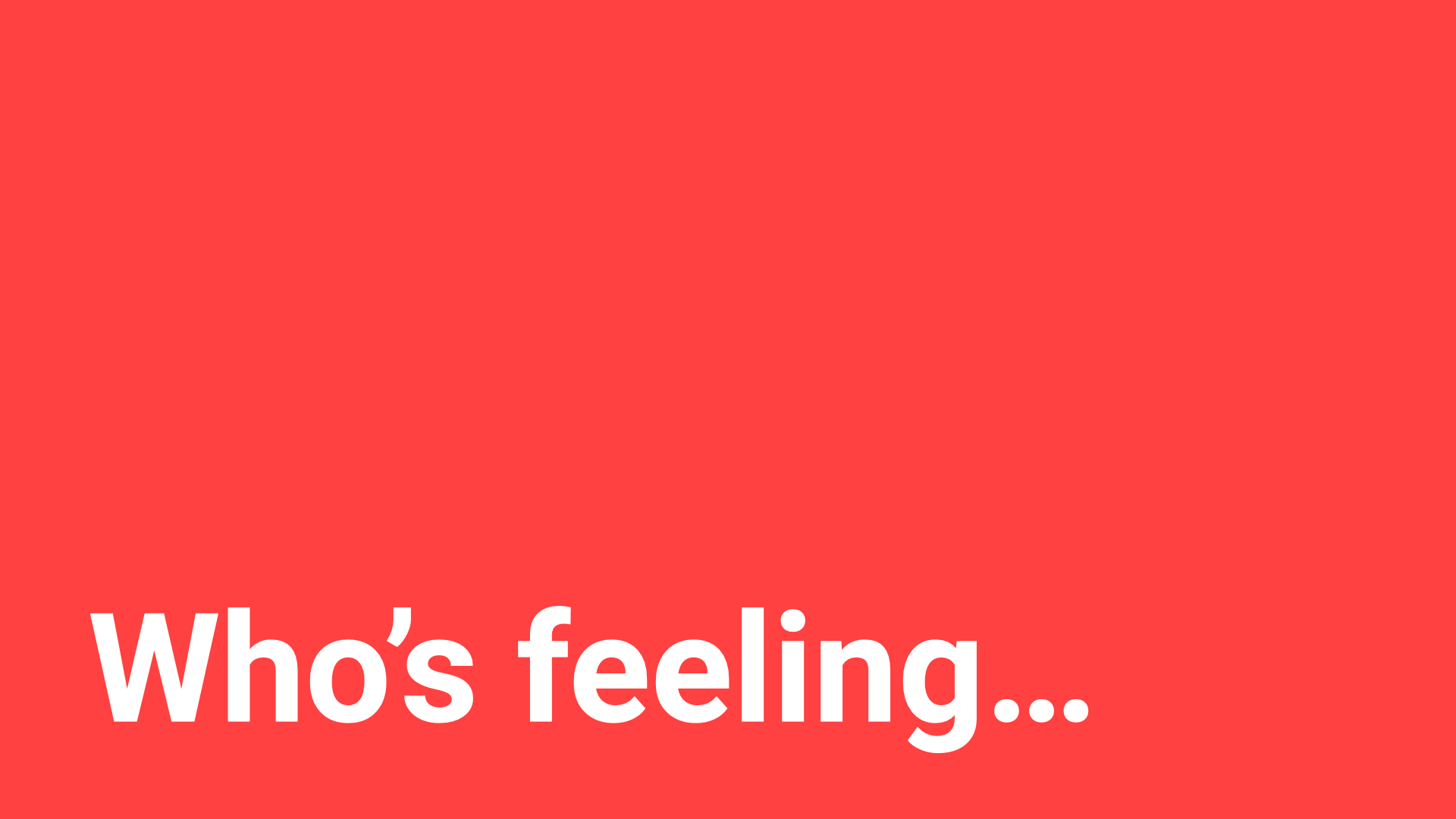
Here's the thing, I want to know from you, and I want real audience participation, who is feeling stressed today?

Now, for a moment, I want you to close your eyes and think about where you are feeling the stress. Can you put your hand on it, on your body? I mean literally, not like the way that teenagers use the word "literally." Yeah, that's good. Notice that.

Who's feeling anxious? Raise your hand. Yeah, me too. Take a deep breath. Where are you feeling it? Put your hand there.

Who's feeling fear? Interesting, that's good. Notice where that's coming up in your body. See if you can sense that. Is it different from these other emotions? The more that you can become aware of what your body is doing, the more powerful you will be at owning your reactions, for yourself, and in your work.
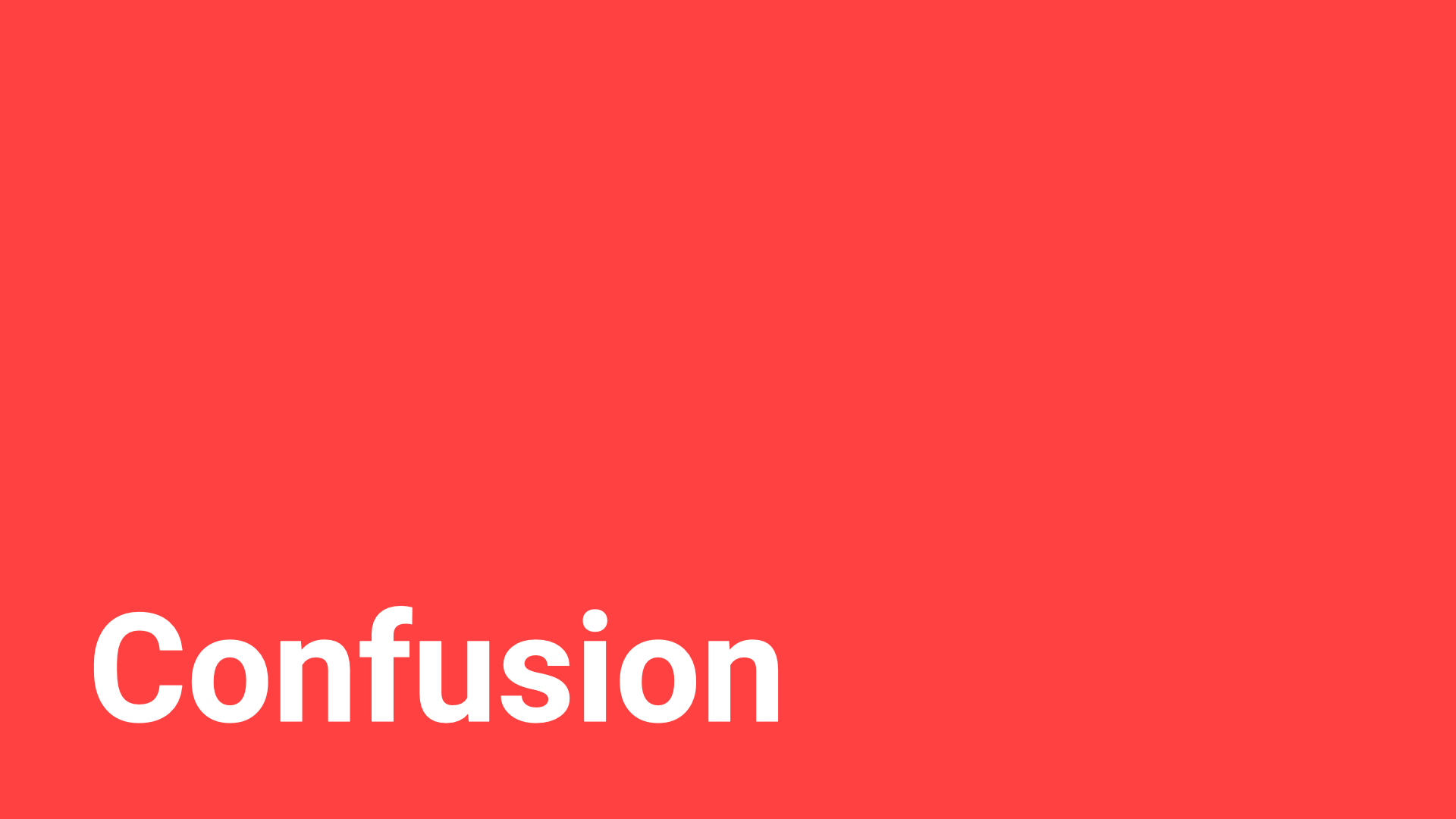
Who's feeling confused? I am. I don't know what's going on. There is uncertainty. What will they think of my talk?

Who's feeling anger? I can feel some anger. Yeah, I definitely can.
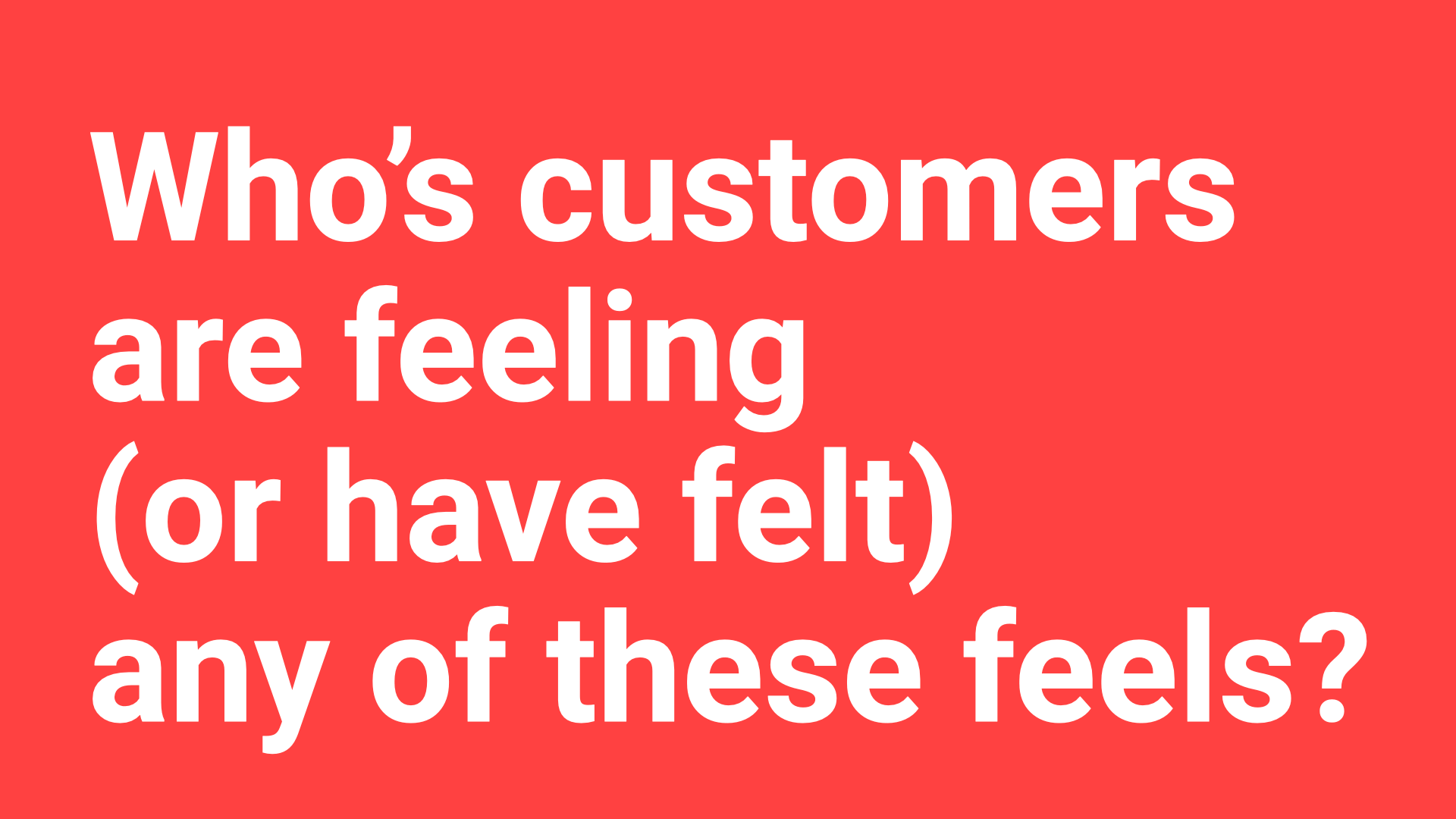
All right, whose customers feel (or have felt) any of these feelings, and maybe you've experienced their wrath, fear, or confusion? I have. I've made some mistakes that have caused people to feel some of those things. I've sent emails that had issues that caused people some of those feelings. We all have to deal with this. Putting COVID aside, putting the pandemic aside, these are real problems. Emergencies happen but also working with emotions happens, and uncomfortable feelings happen.
One of the things that I want to point out is, who would say that these are bad feelings? Who would say that these are good feelings? Okay, one person thinks these are good feelings. One of the things that we usually do here with feelings like this is create a binary. We say those are bad feelings. I do not want them, and then with elation, joy, excitement, and ecstasy, we say more, please.
Did you know that apparently, if you touch your heart right here like this, it releases dopamine, and I'm like, oh yeah, more dopamine. These feelings that can cause discomfort, which we generally think of as bad, but every one of us and our customers feels those emotions. That is something that we have in common with our customers, and that should create something really powerful between you and your customers.
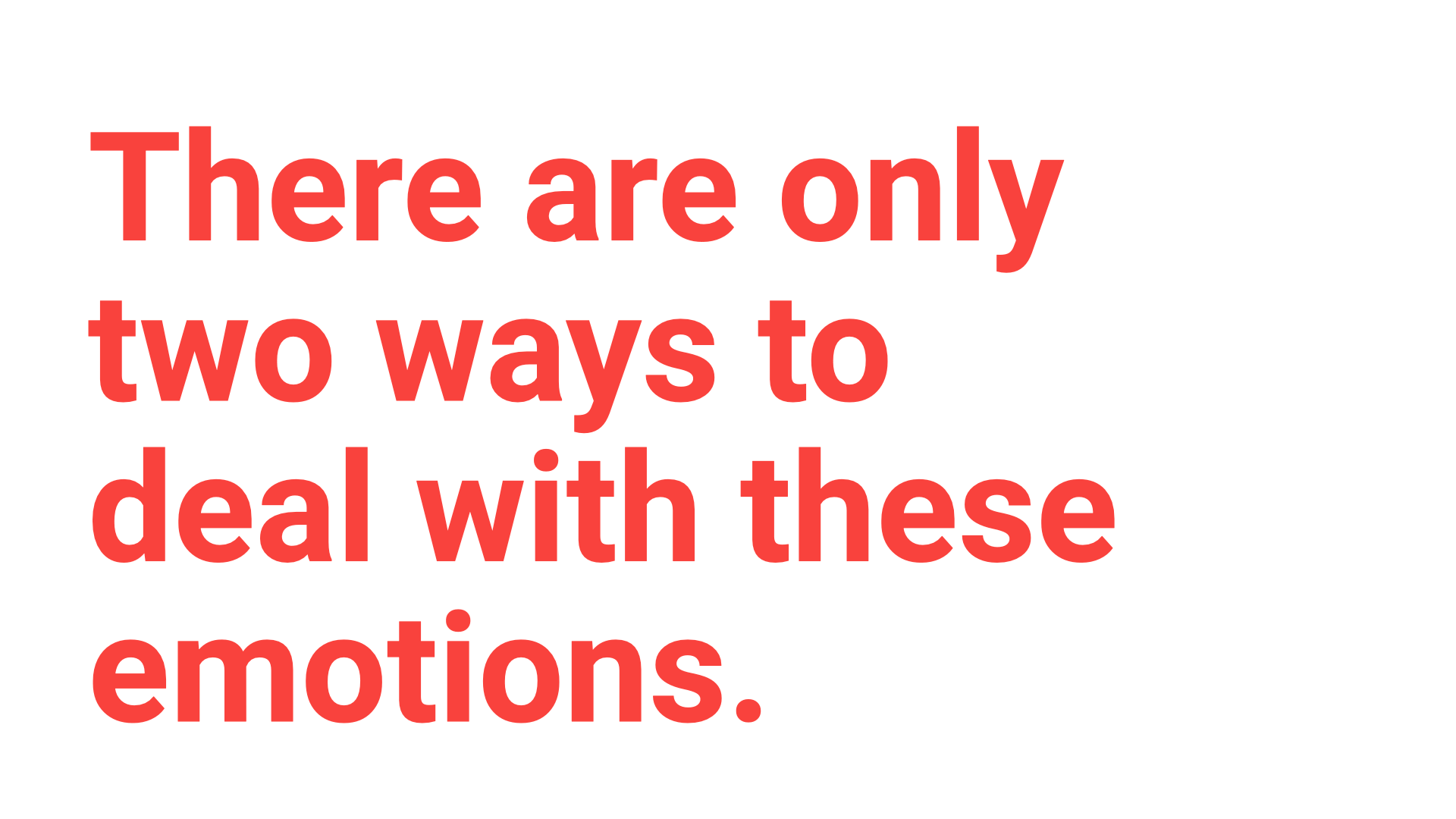
I want to reinforce, though, that there are only two ways of dealing with these emotions,...

complete and utter relaxation...
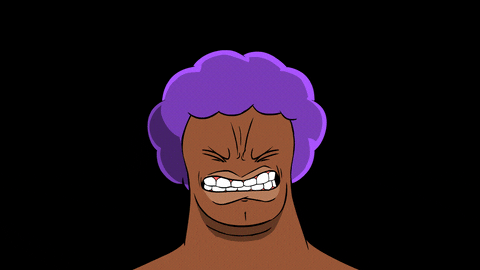
or total freak out...

False. That is incorrect.
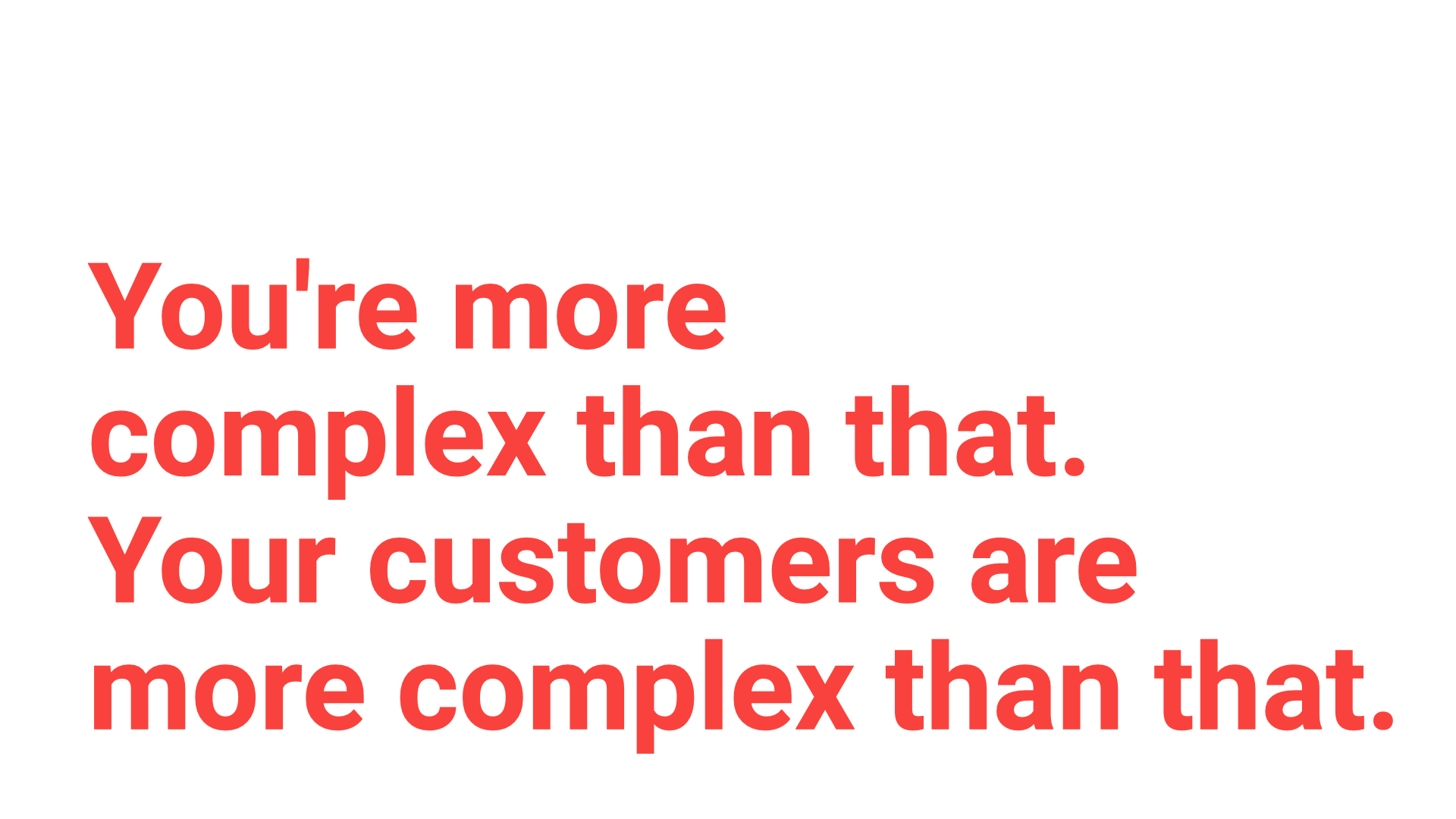
You're more complex than that. Your customers are more complex than that.
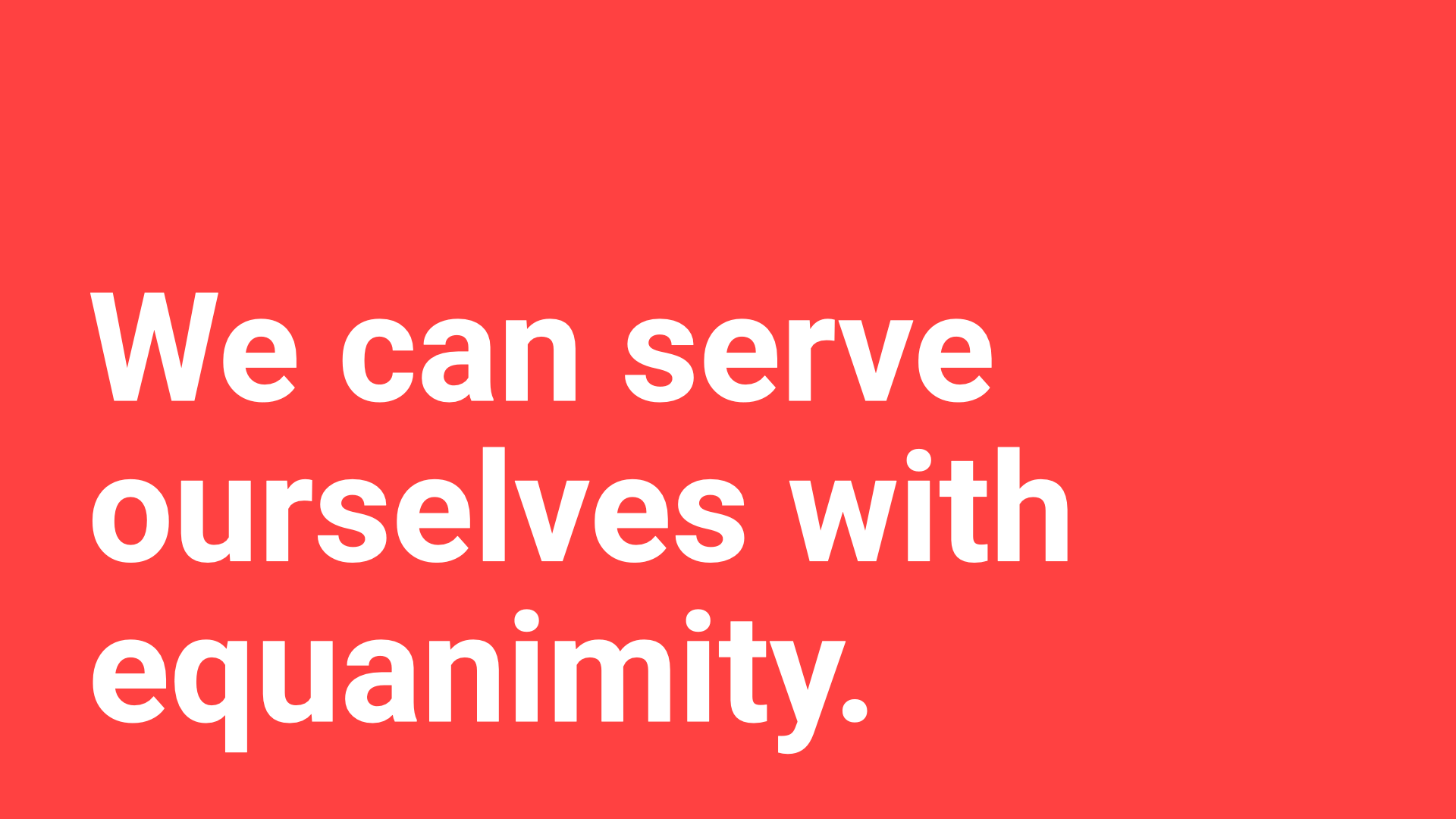
I want to talk about how we can serve ourselves with equanimity.
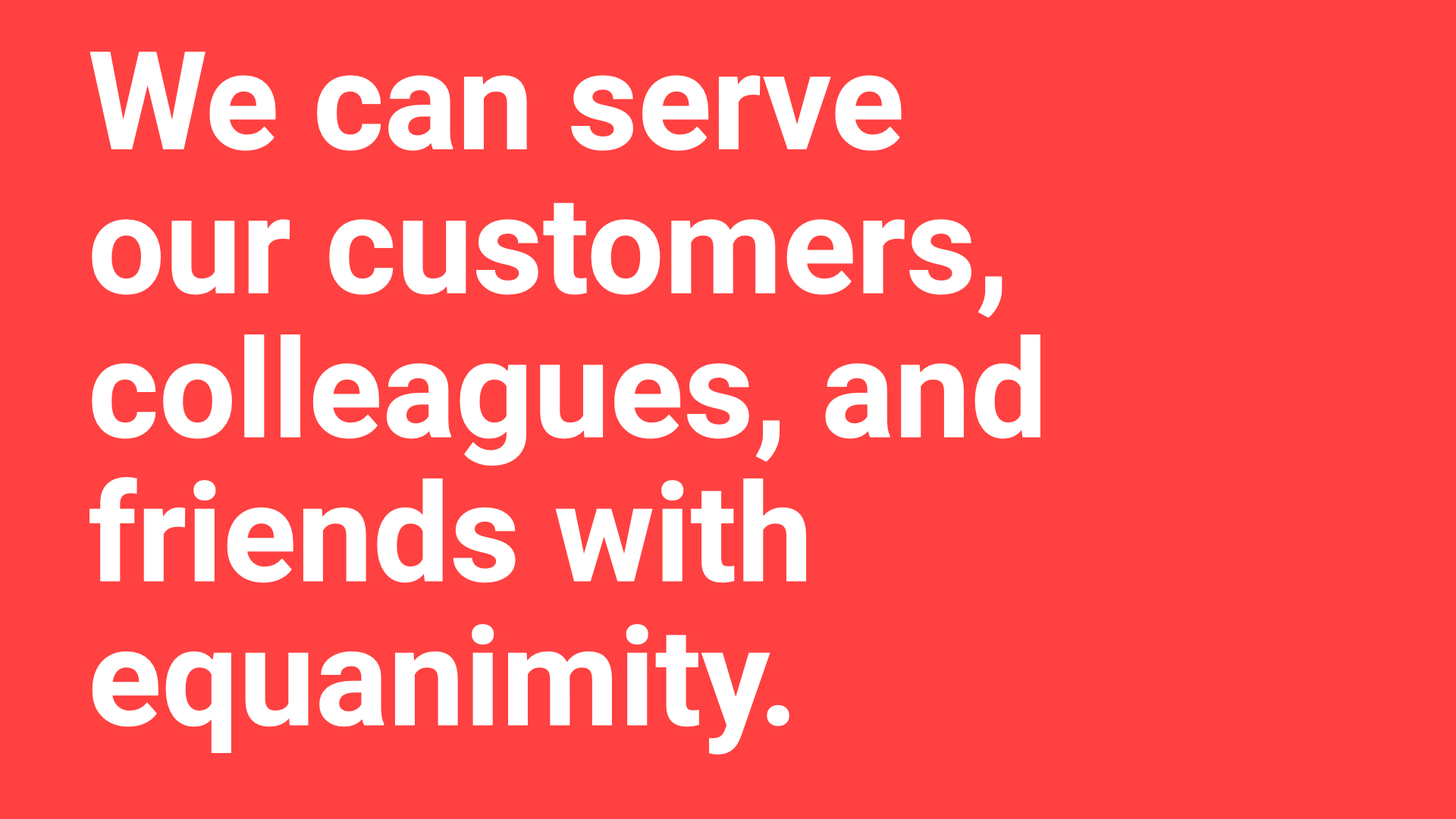
We can help our customers, colleagues, and friends with equanimity. Who knows what equanimity means? That's what I thought. It's not a very common term.
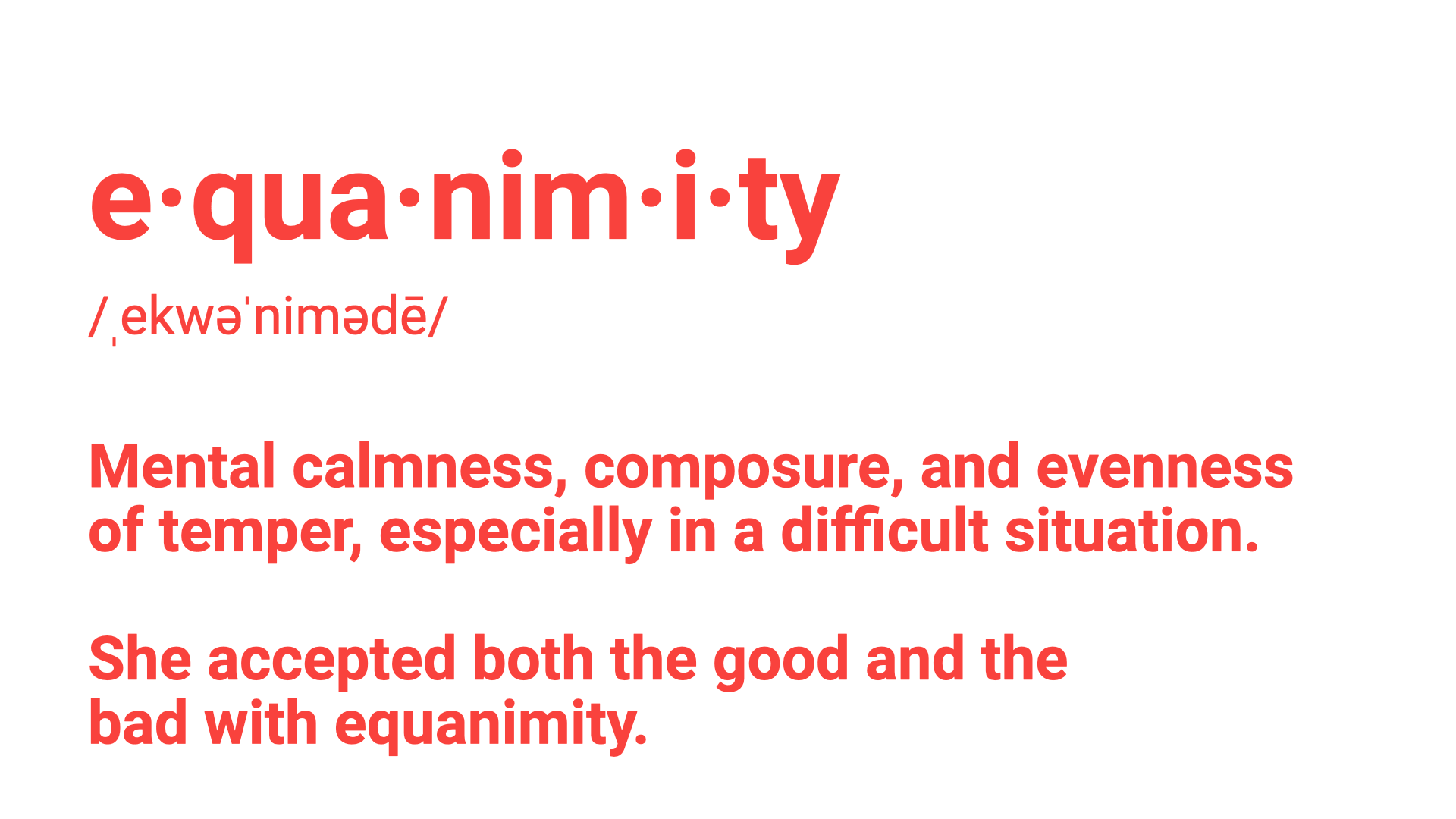
Equanimity means mental calmness, composure, and evenness of temper, especially in a difficult situation. She accepted both the good and the bad with equanimity.
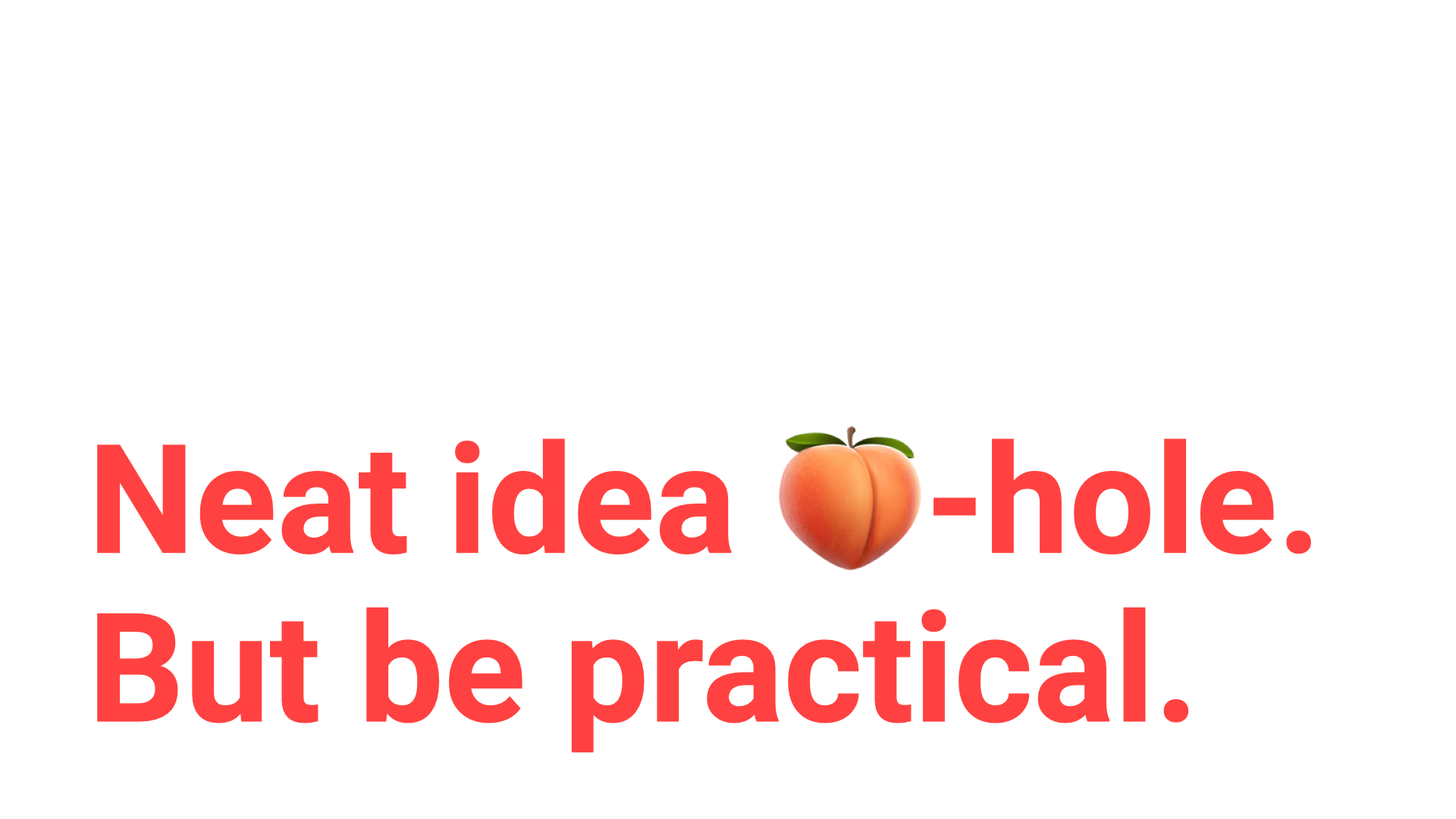
That's a neat idea, a-hole but be practical. It's nice to talk about things like this, but what do we do about it?

Okay. I'll show you.
As I've said, I've had to give up alcohol, which was tough, but the more challenging thing underneath that was dealing with all my insecurities and a deep fear of abandonment, which comes with many people who deal with trauma. So, I learned some cool tricks along the way. What I want to help you do in this exercise is to clear your Mental Inbox.
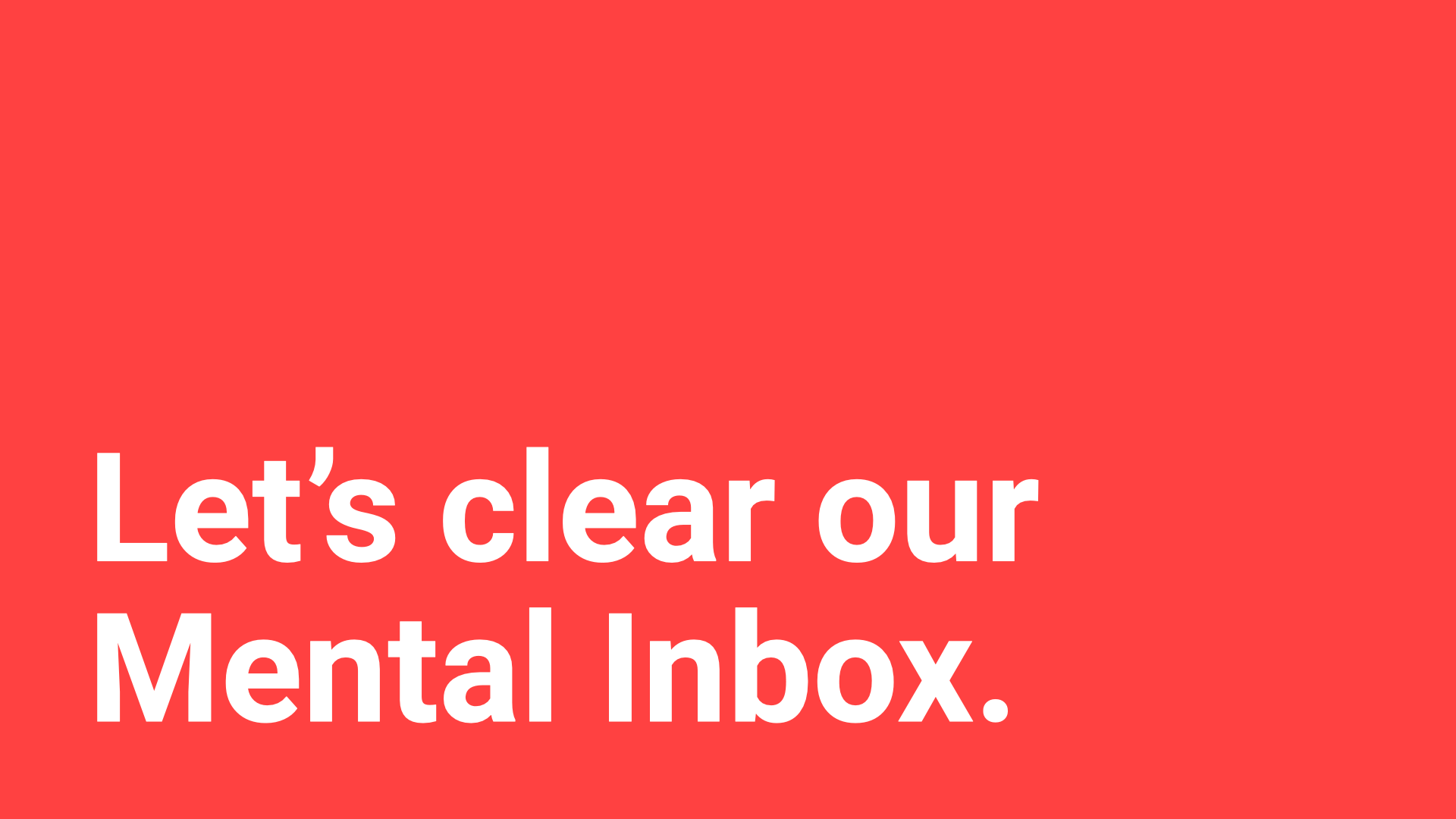
It's a term that somebody used recently with me as we talked about some of this topic and how I want to talk more about it. It made sense about this relationship I have between my recovery world, and I write on Instagram quite a bit about it at @matthew.lloyd.smith, and then my email world and my design world. Let's get into this.

The first area for practicality is mindfulness. Mindfulness talked about, and mindfulness practiced, mindfulness understood are two different things. I want to help you understand something.
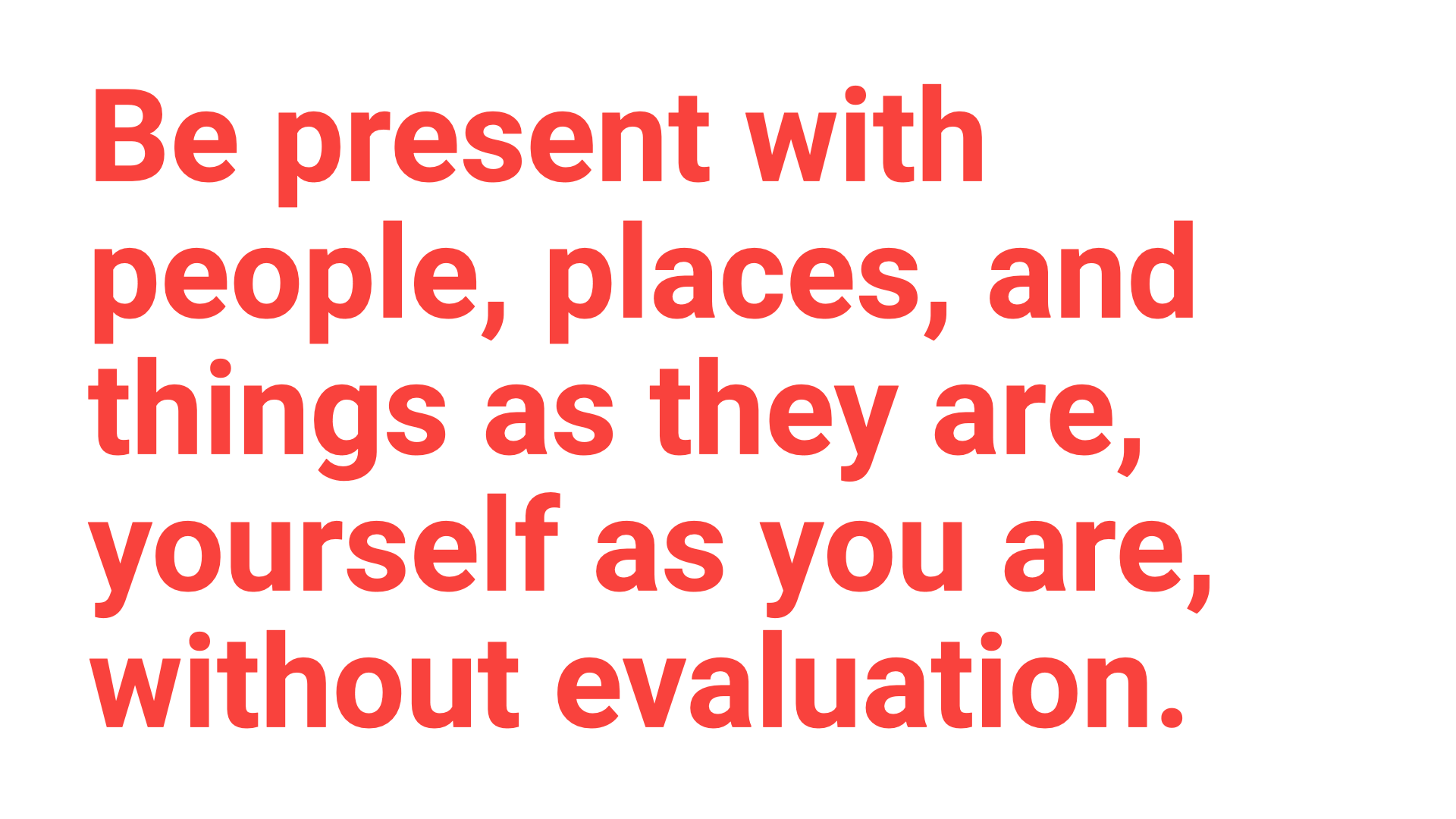
Mindfulness is being present with people, places, things as they are, yourself as you are, without evaluation or judgment is another way of saying this. Is COVID bad? It's a hard one. People are dying. We know that it is. We know that it's uncomfortable. Is the mistake you sent out in the email to 100,000 people bad? It feels terrible. It feels uncomfortable. It is what it is.
How about that colleague who will not stop doing that one behavior? Is it bad? Well, it is. Okay, what about that behavior that you have? That you can't seem to change? That addiction that you keep coming back to, the weight you can't lose, the alcohol you can't quit? Any behavior, anything that you keep coming back to. Can you accept it about yourself? Can you accept the temperature in this room, as it is? Can you accept the smell when you're sitting next to somebody who's all up in your space on that airplane? Can you deal with it? That is where mindfulness meets a real road.
I'm going to take you through a process of mindfulness now called RAIN. Who knows Tara Brach? Oh sweet, this is great, so you all are going to know Tara Brach now. So, the next time I say that you will not have an excuse. She is amazing. She is one of probably 10 U.S. Western-oriented mindfulness practitioners in this area that is changing everything. She has a great podcast, she's on Twitter and some other things, but a genuinely beautiful soul. She has a process called RAIN, and it starts first with breathe.
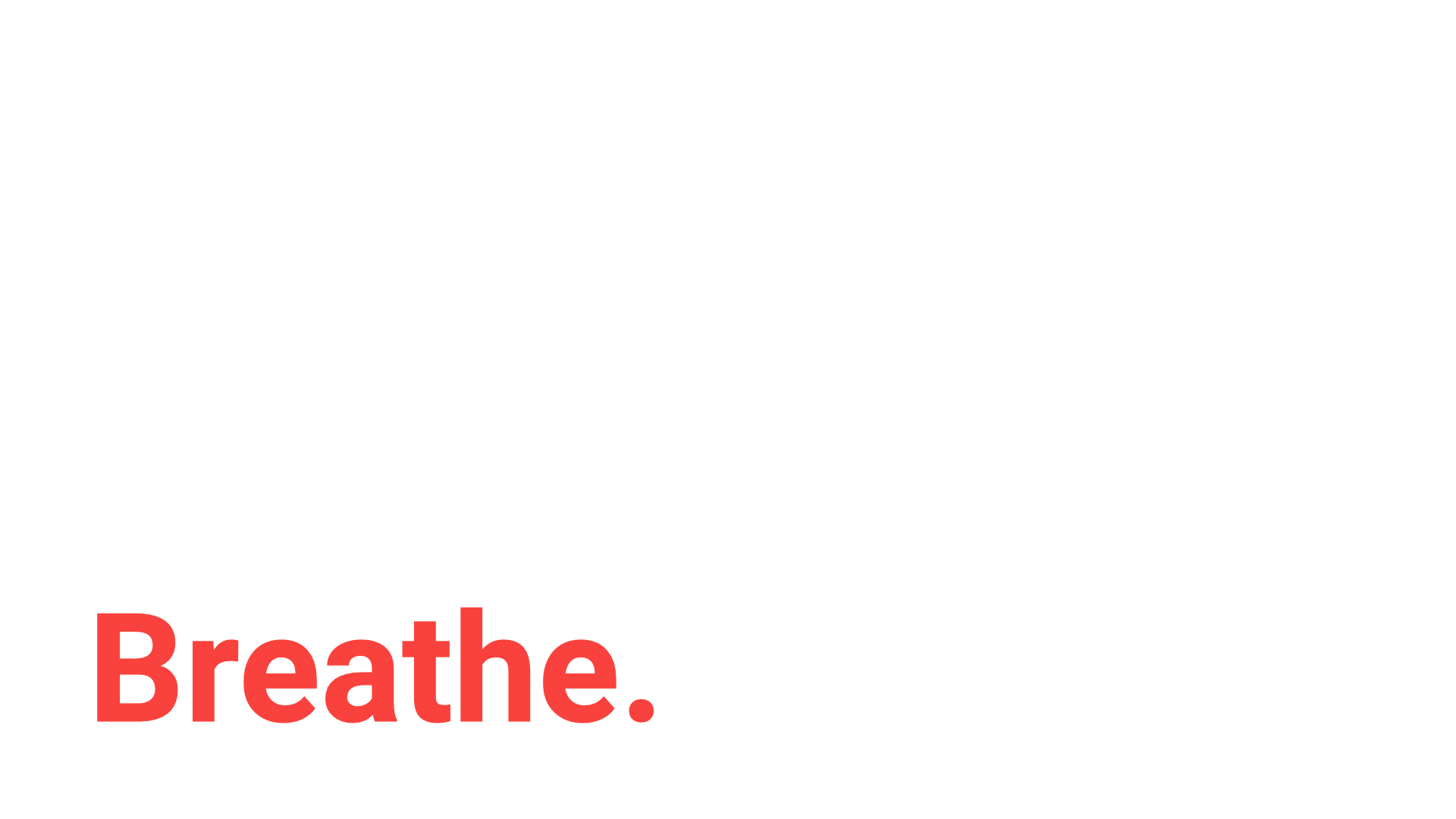
So, we're going to do some mindfulness together. Sit up straight in your chair. Get yourself ready. First, everybody close your eyes. You're in a safe place; these are safe people. These are not people that make fun of each other. We are a community. We're in a good place together.
Take a deep breath in through your nose and a slow breath out through your mouth.
Deep breath in through your nose and a slow breath out through your mouth.
Deep breath in through your nose and a slow breath out through your mouth.
Keep your eyes closed.
The first thing that we're going to do now is recognize all the thoughts that are coming and swimming around in your mind, and that's okay. Mindfulness is not about not having thoughts. Mindfulness is about noticing what's there. See the thoughts. Notice what color they are. Notice if they create a feeling in your body. Notice where that feeling is. Without judgment. Without criticism. Without assessment. Without comparing. Let that thought go. Let it flow down the river and come back to breathing. Keep moving the breath in and then out.
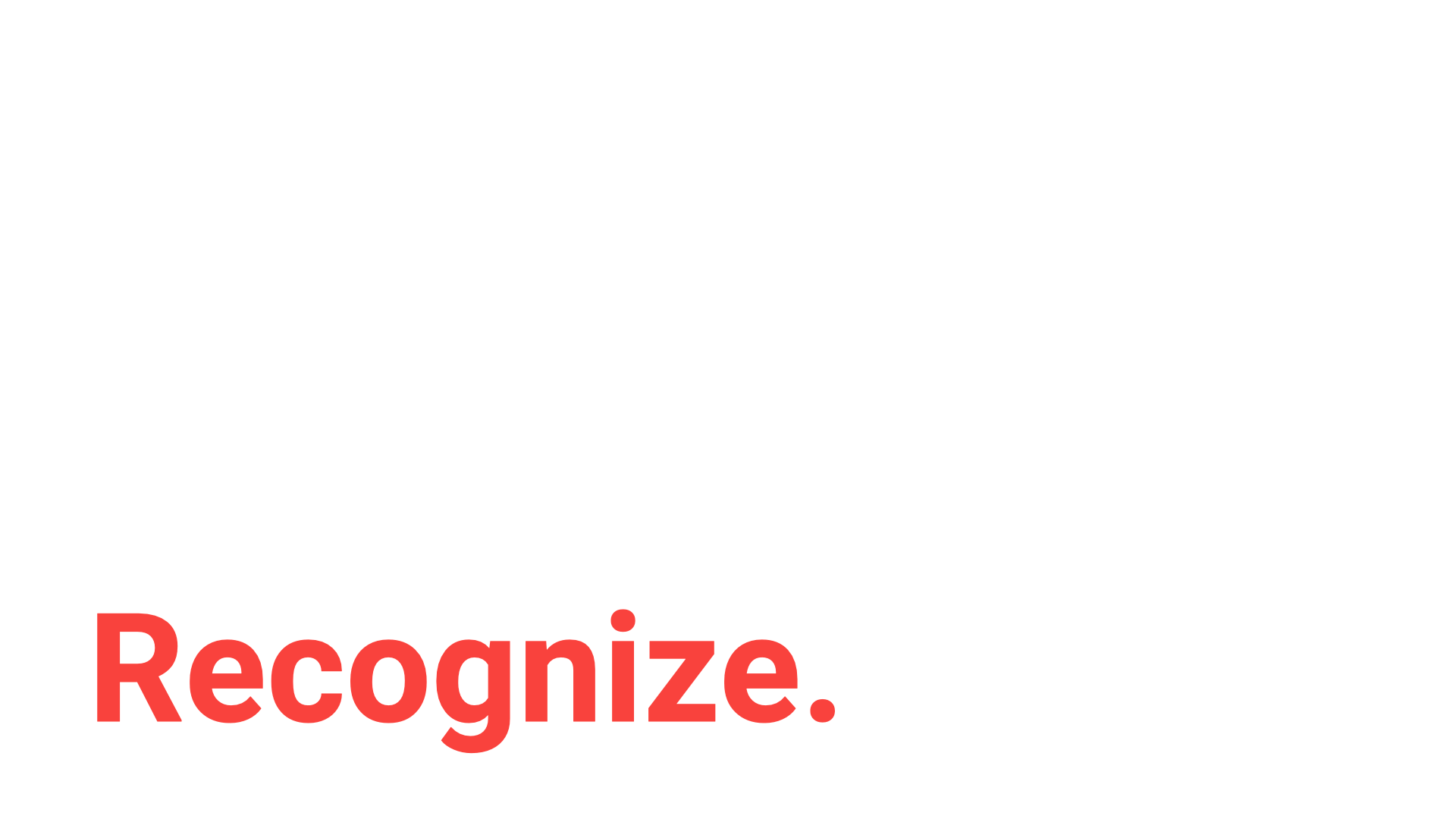
I want you to recognize for a moment, sort of a mental break from being at an email conference. Do you remember whom you are as an individual, having this human experience in the middle of a very unique, challenging time in history? How are you feeling? What is coming up? Notice it. It's okay that that feeling is there, stressors and anxieties. It is okay. It's understandable. Notice it, be aware of it. Notice the way your body feels in the temperature of this room. Is it a little cool? Are you a little warm? Can you feel your heartbeat? These are all good things to notice.
Now I want you to do something where you notice the way you feel in your body, the feeling of your feet against the floor, your bottom on the chair. I want you to sync up what is similar between those and the feelings you're having in your mind. They're just things, no judgment.
Now we're going to go from recognizing those feelings to allowing those feelings.

I want you to be able to allow the emotions that are happening right there in your mind, keep breathing, and let them be, let yourself be. By allowing those feelings, you're creating a safe place for you to be integrated. You're saying to yourself, no part of me has to leave and go away. All of me is acceptable right here, right now, as I am. This is self-compassion. Keep breathing, making sure that that breath is full and big. Give your body and give your mind the breath.
Now I want you to investigate a little bit.
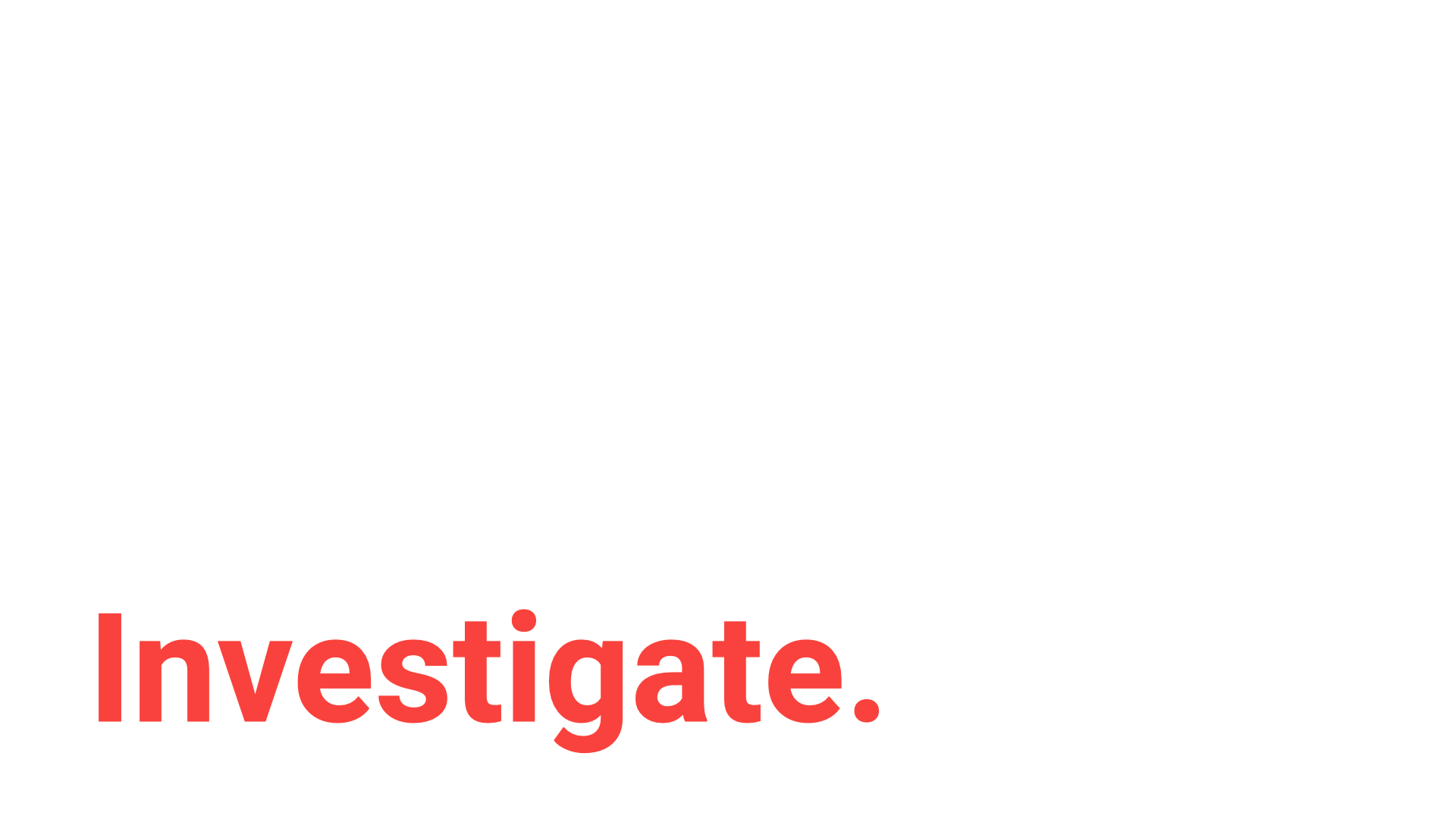
Ask the feelings, ask the fear, ask the stress, ask the anxiety, the confusion, the anger, whatever you're feeling, you can ask it, "Would you be willing to tell me more about where you come from?" You can ask it, "What are you afraid will happen if the fear were to subside?"
What are you afraid will happen if the anxiety subsides? You can ask it, "What job are you doing for me?" Hello, fear, thank you for being here, thank you for helping protect me, thank you for taking good care of me. What are you hoping to do for me? What is the job that you've come here to do? Listen; the way you would listen to a child who's scared and needs to talk to an adult. Honor that feeling, respect the sentiment. It has something to teach you.
Now, we move into nurturing.
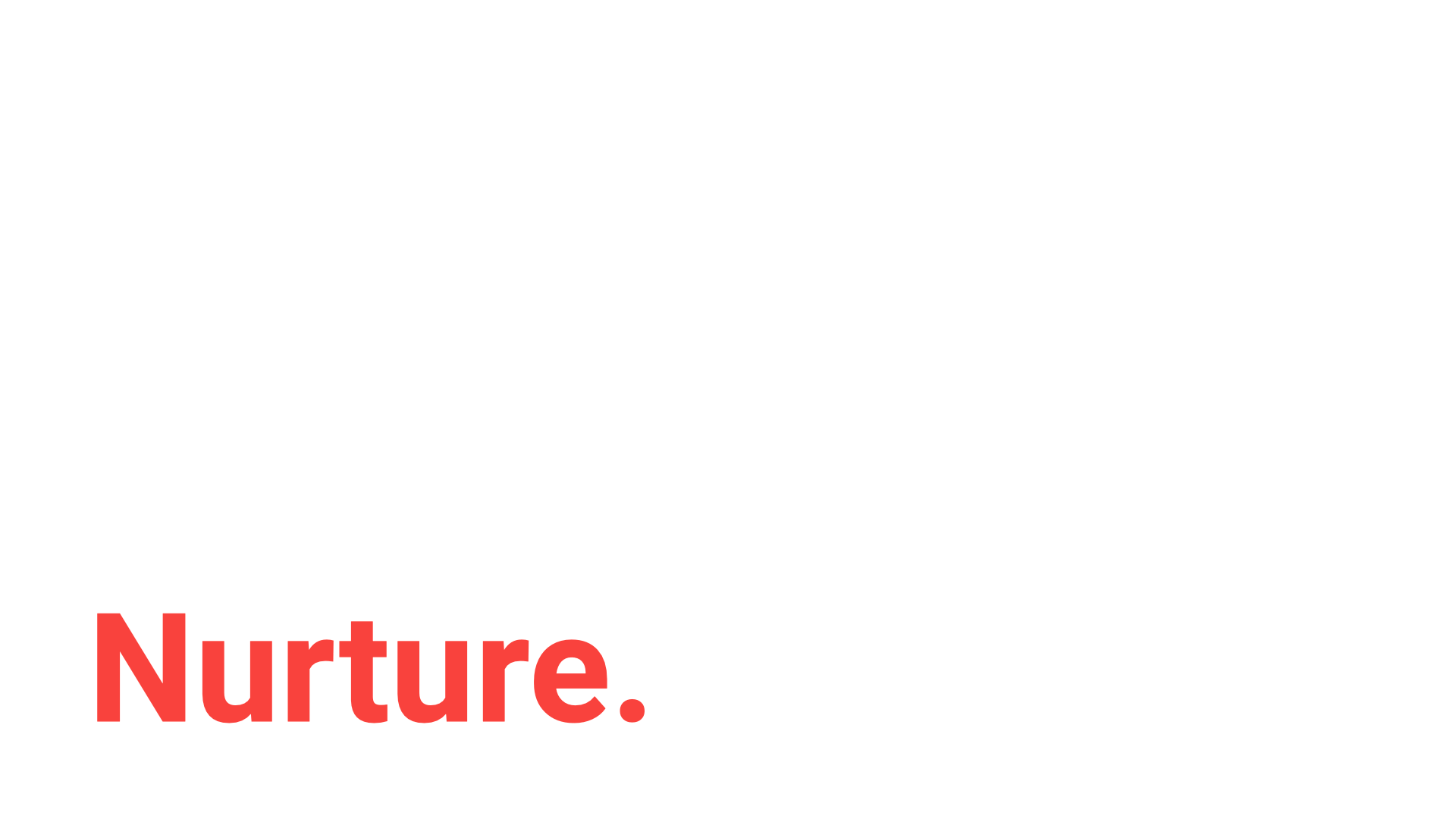
As you breathe, you can tell the feeling, tell your body, tell yourself, it's okay to be where I am. It's okay to be as I am. Thank you for showing up and listening. Thank you for being here. You can hug yourself. You can give yourself one of those awesome, dopamine, crazy things I did. You can take care of yourself and your body, and you're nurturing. Fantastic work, everyone.
Now, take a big breath in through your nose and out through your mouth.
Two more. Great. Fantastic.
All right. Now open your eyes, please. Well done. It's tough for us, especially an American audience, to stay still that long. No joke. I do about 15 minutes of this every morning, all silent, and it has changed my life.
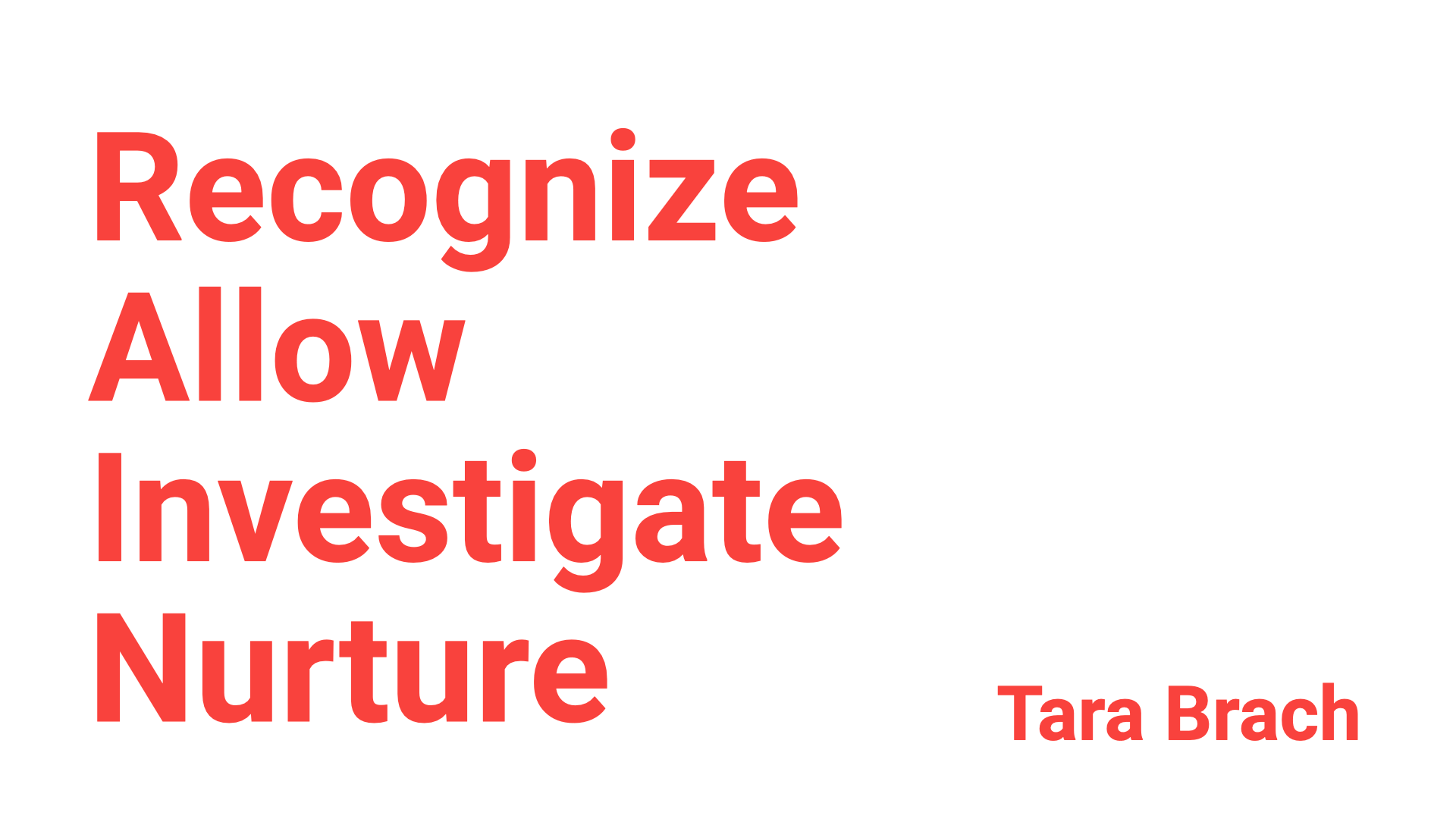
Tara Brach calls this "Recognize. Allow. Investigate. Nurture." or RAIN.
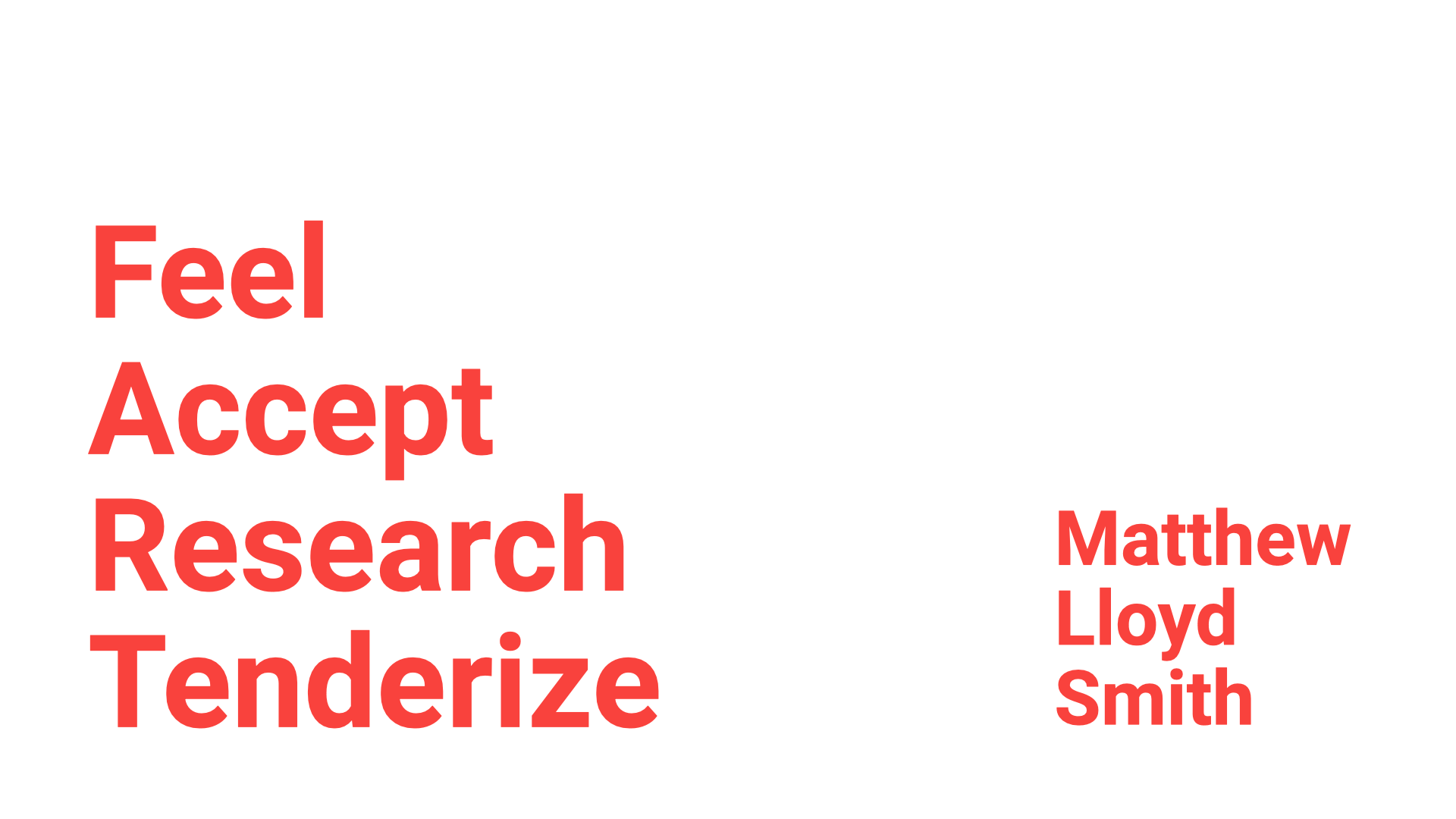
I call this "Feel. Accept. Research. Tenderize." or FART.
*Audience Laughs*
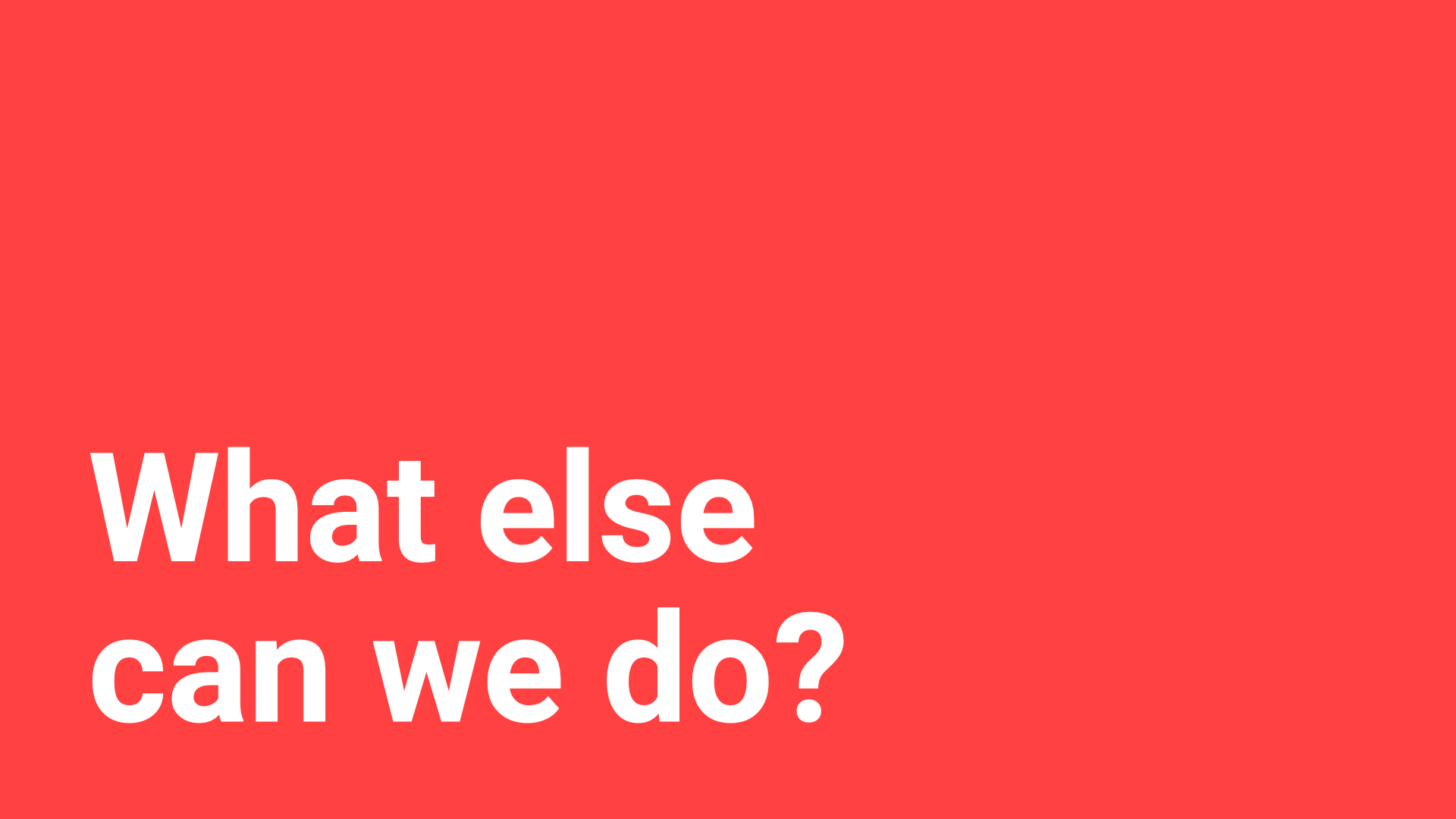
What else can we do?

We can observe without evaluation. I went through that; I think you all understand that now. We can also do this for others. At Costco earlier yesterday, Matt Cook was getting some water and some bananas for the conference, everyday needs. He saw some people getting into a fight. He saw a man arguing with his presumable now ex-wife on the phone, cursing at her, and being angry and upset. He saw lines out to the back and people stealing each other's parking spots. You can either get right in there, you can try and change that, which isn't changeable, or you can observe yourself and others without evaluation.
When you do that, you move into a place where you create distance between your observation and your action. That little distance is where sanity lives. The more that you practice that, it makes a change in your brain circuitry. It's called neuroplasticity. Who's heard of this?
I love seeing that because this was not known ten years ago, and this is changing. This is how I'm up here today, and not either wholly gone or somewhere else in a terrible spot. My brain changed, and it took a ton of practice, but I changed my mind every day doing this kind of work, and it's so powerful.

Let's see how he's observing first. This is good. Look at that, oh, that's beautiful.
This is the next one, shaking your body. Who's ever seen a dog have one of those moments where the dog is sitting there, and then they shake out their cheeks? That's genetics. Some of us are closer to the link to dogs and apes than others. I believe we are completely evolved from animals, and we have these instincts in our bodies.
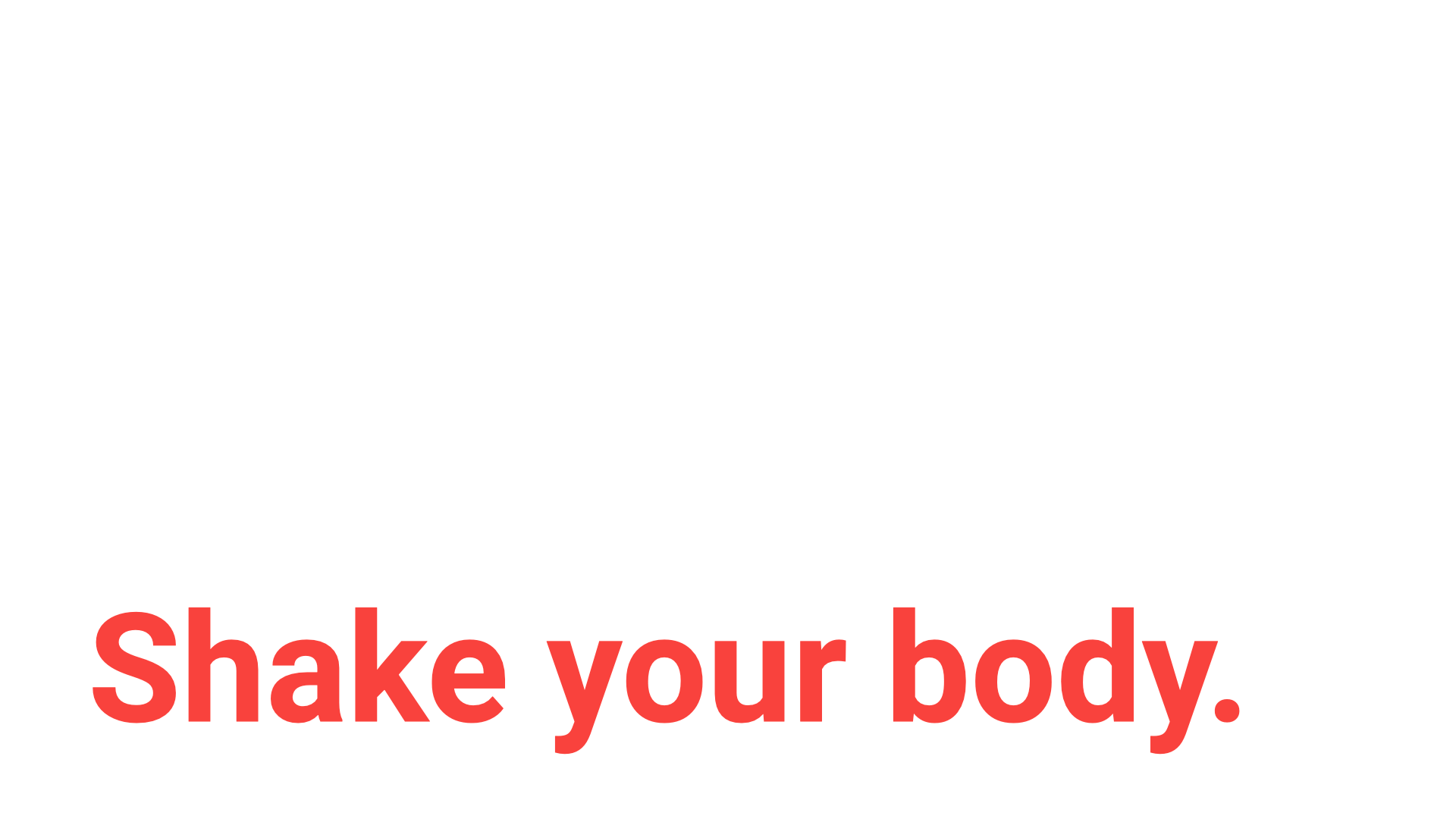
Everybody get up. I'm not going to ask you to get crazy and move too far. Stand up where you are. What I want you to do is take a moment, first watch me. You can feel it. You can see the body go, whoa, reset. Then, imagine yourself being in a depressed state, an anxious state, an upset state, or a stressed state and doing that three or four times in one minute. It's a game-changer, no joke. This is not like, haha, okay, Matthew. It's the real deal.
It's also that, but anyway, ready? Okay, 1, 2, 3.
*Audience shakes their bodies*
Oh, baby, that's awesome. I love that. All right, thank you. Wonderful job. Round of applause here for everybody.
*Audience claps”
That is awesome. No joke, this is a technique. This technique takes you out of your amygdala, where you've been hijacked with your stress, and it gives your body a response to take you out of there, and it puts you back in your prefrontal cortex. I'm not a neuroscientist, but I'm learning a lot, and I think that's what happens. That is potent shit right there.
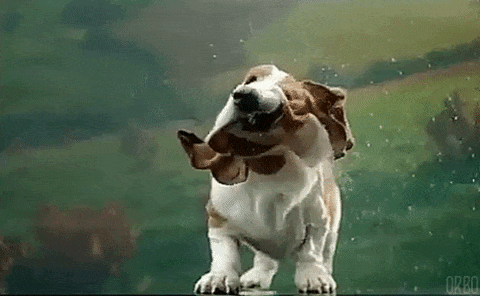
Let's see how he's doing. He's doing a beautiful job, oh man, look at that, all so good. I wish I had so much skin like that.

All right, let's get grateful. Who practices a gratitude list? Yes. This is how our nation heals y'all. This is how it gets done.
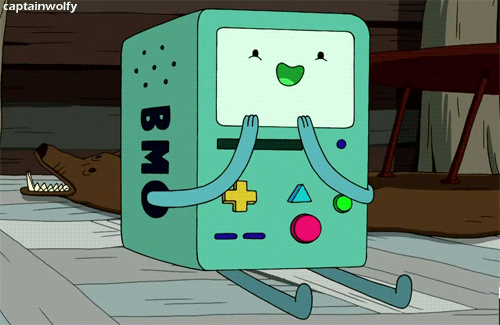
One of the things here, this is the kind of feeling that we're looking for, this little happy guy. What I want you to do right now is let's go around, and I want you to say things that you're grateful for, but I want you to think outside the traditional stuff and see if you can say some things. Think about some things that are not your standards, or it's the stuff that you don't think about.
For instance, in one of my 12 step meetings, I have a guy who comes in now and then. Not long ago, he came in, and he was grateful to be in the meeting with people he knew had his back. He's trying to get out of a situation where he's been homeless. He's having ALL of his teeth pulled because they're all diseased. I realized how thankful I am that I have teeth. That's crazy. I've never once thought that until that happened. I took it as well; I've got teeth. They're great. Good, move on, but no, this would be a different presentation if I had no teeth. What are you thankful for right now? Go for it, hand up, and I'll call on you.
Audience member: This community, which sounds very cliche, and also a very, very supportive partner.
Matthew Smith: And a very supportive partner, Fantastic, thank you. Yes?
Audience member: I’m grateful that I get to work for a company that doesn't make me grind away until there's nothing left. I get to go home and do something that I care about or nothing at all.
Matthew Smith: That's beautiful. Thank you. Yes?
Audience member: I’m so grateful for my cat.
Matthew Smith: Awesome. What's the cat's name?
Audience member: Louis.
Matthew Smith: She's so grateful for her cat Louis. I love it. Thank you. Yes?
Audience member: That I can work from home.
Matthew Smith: That’s awesome.
Audience member: I’m grateful that I spent time with my daughter when she was very young and growing up. I got to be there every day.
Matthew Smith: I love that. He’s grateful he gets to spend time with this little girl.
Audience member: That I’m in long term remission from cancer.
*Audience cheers*
Matthew Smith: She's grateful she's in long term remission from cancer, gorgeous. All right. Isn't that awesome?
All right, who else? Yes?
Audience member: I'm grateful for all the people today working to serve this conference and the people doing the labor-oriented work, such as food service.
Matthew Smith: She's grateful for all the people serving this conference doing the hard labor-oriented work and for all the foodservice folks and all the people who can't work from home.
Remember, whatever you think is the best tip you can give, add $3 or $4 more. Every time you have a chance, like a woman who was around here cleaning up yesterday, it was a great moment. I thought, man. I'm going to embarrass myself. She's going to think I'm weird. I went up to her and was like, thank you so much for being here, for helping, this is such a hard time, and she was like, "Really? Thank you". I felt, yes, a human moment, connection! That's what we're looking for, so take that time. Anybody else?
Audience member: I’m grateful for opposable thumbs.
Matthew Smith: We would be toast without them. What else? Yes?
Audience member: I'm grateful for the opportunity to be able to drive. I recently heard a story about a woman in Syria who has a car, which is rare for women there since most women don't. I'm grateful we live in a country that supports us and supports us as women to do these things and travel by ourselves.
Matthew Smith: Fantastic, she's thankful she can drive, and that we live in a country where that's possible for a woman and celebrated, and it's easier to get than in most other countries like Syria, where that's very unusual. That's fantastic. Thank you. One more. Yes?
Audience member: After our accessibility session, I'm happy that I can see and I can read all the emails that annoy me so much.
Matthew Smith: Yeah, she's grateful that she can see all the annoying emails. Yes, I like that, that’s good.

All right, what do you put into your customer's Mental Inbox, now that we've done a lot of self-healing work? Do you see where this is going?
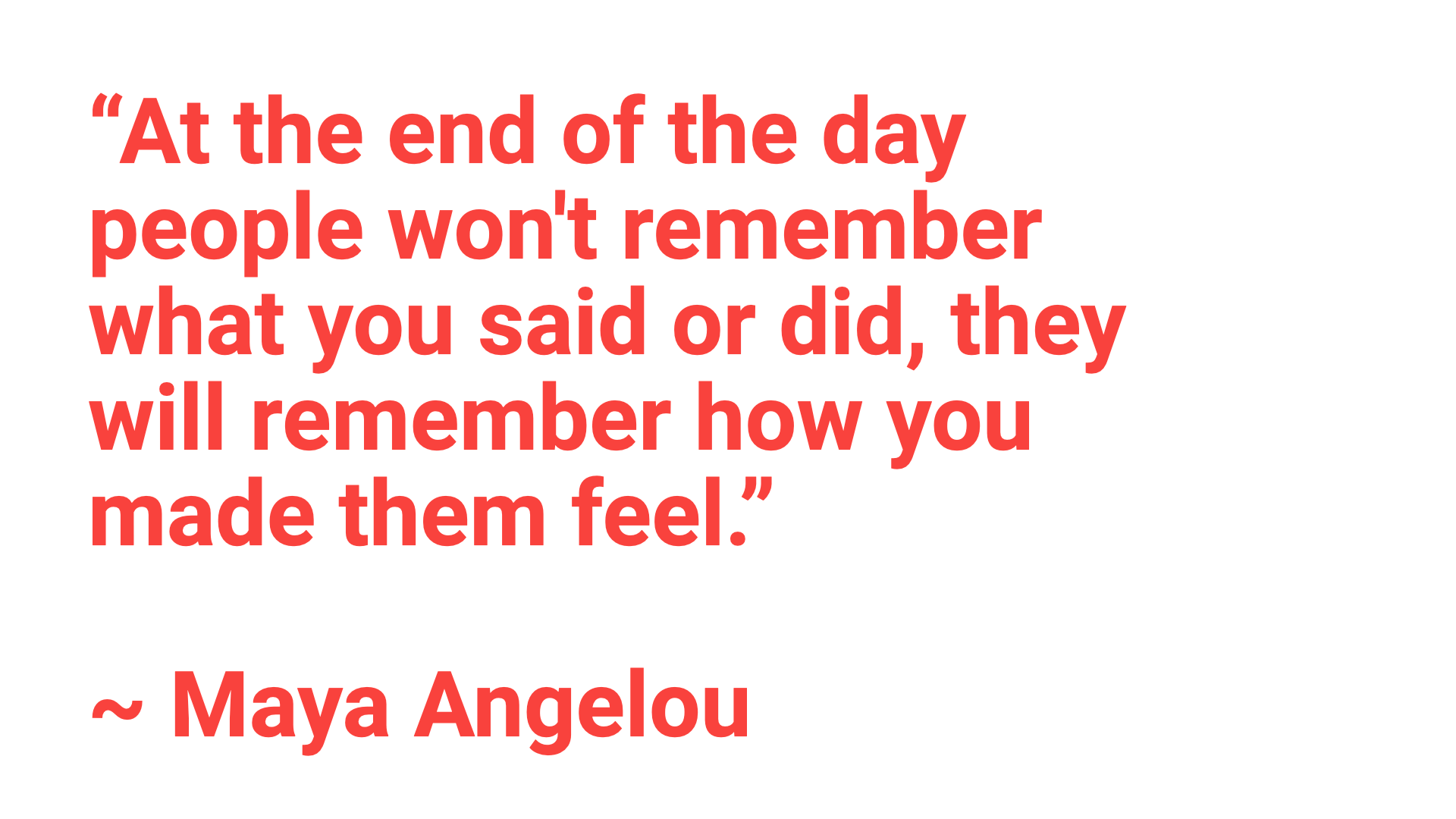
"At the end of the day, people don't remember what you said or did; they remember how you made them feel." This quote is attributed to at least seven people. Maya Angelou is one of them. She's cool. She's black. She's a woman. She gets my vote.
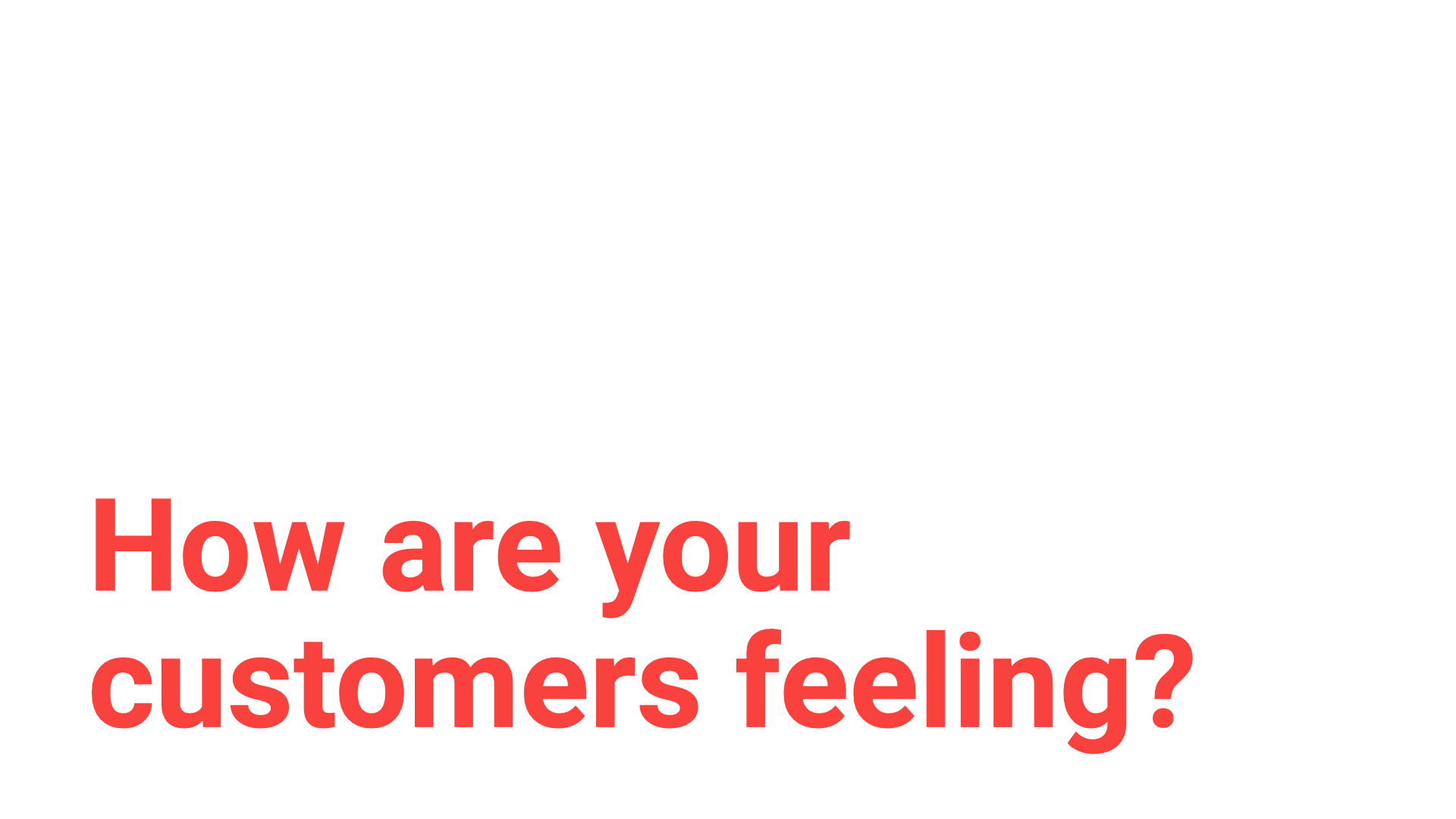
How are your customers feeling?

These are feelings, everybody, for those of you who don't know. They start here with sad, mad, scared, joyful, powerful, and peaceful and go out here. Look at this, spend time in this wheel, spend time thinking about what you are, spend time thinking about what your customers might be feeling.
Why am I shopping for a go-bag? Because I'm afraid that the world's coming to an end in a pandemic. Why am I shopping for pet insurance? Because I'm terrified that my cat will die or that she's going to get sick or that something will happen and I won't be able to afford what's going to happen. Why am I shopping for softer sheets? Because I want to sleep better because when I sleep better, I am saner.
How am I feeling? Why am I on Dribbble? Because I need a job because I need to connect with the community. What is the feeling I get out of enjoying a great meal through Yelp that helped me do that? What is the feeling? What are you helping your customers achieve? What happens if things go wrong? How do they feel then? Do you know? Have you spent time getting in their heads or talking to them? Whoa! Can you imagine? You should write to them, "Hey, Louisa or Jorge, what are you feeling, what's going on in your life? How is our product serving you? Or, have we missed the boat?". Find out how they're feeling.
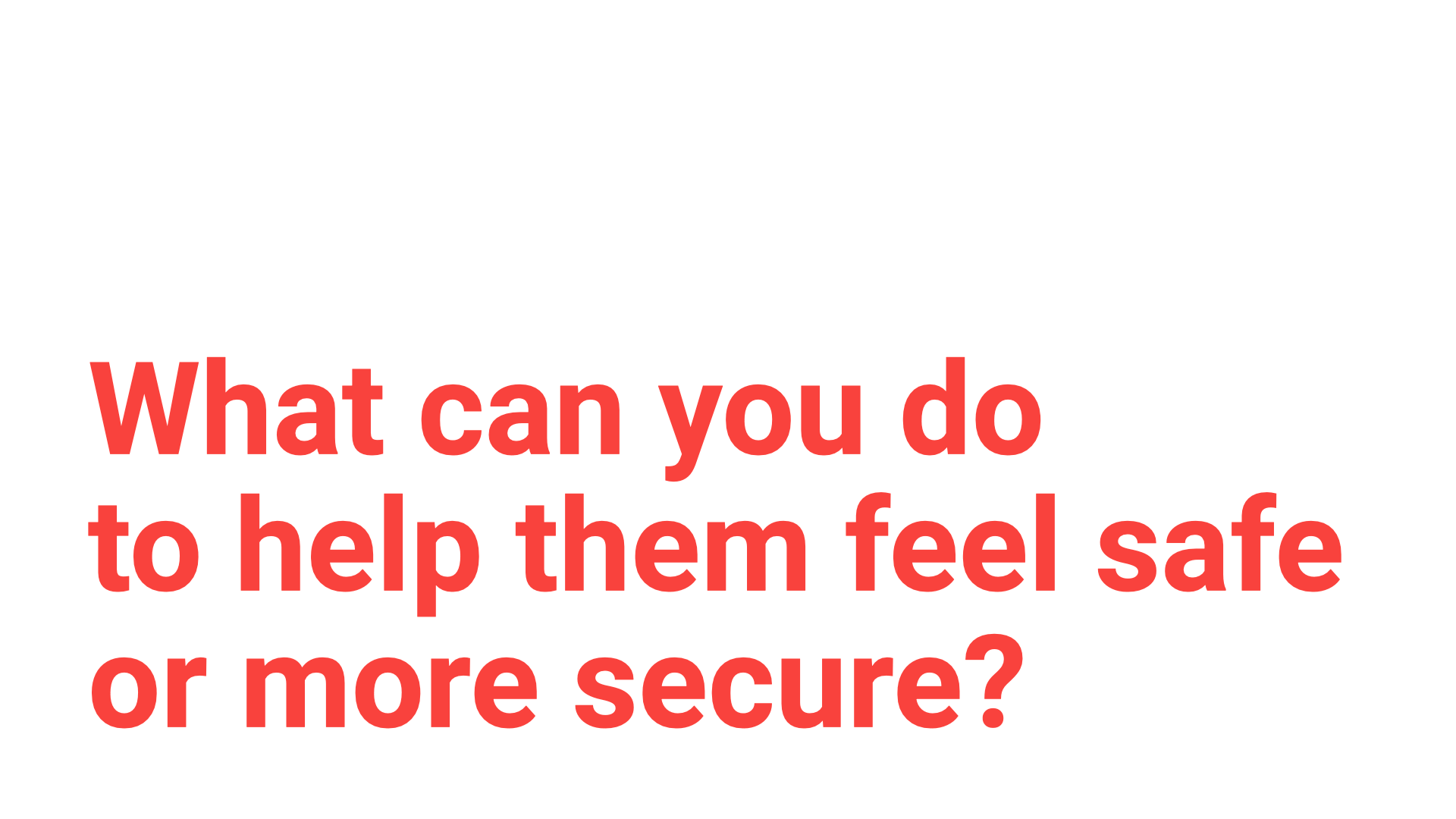
What can you do to help them feel more safe and secure?
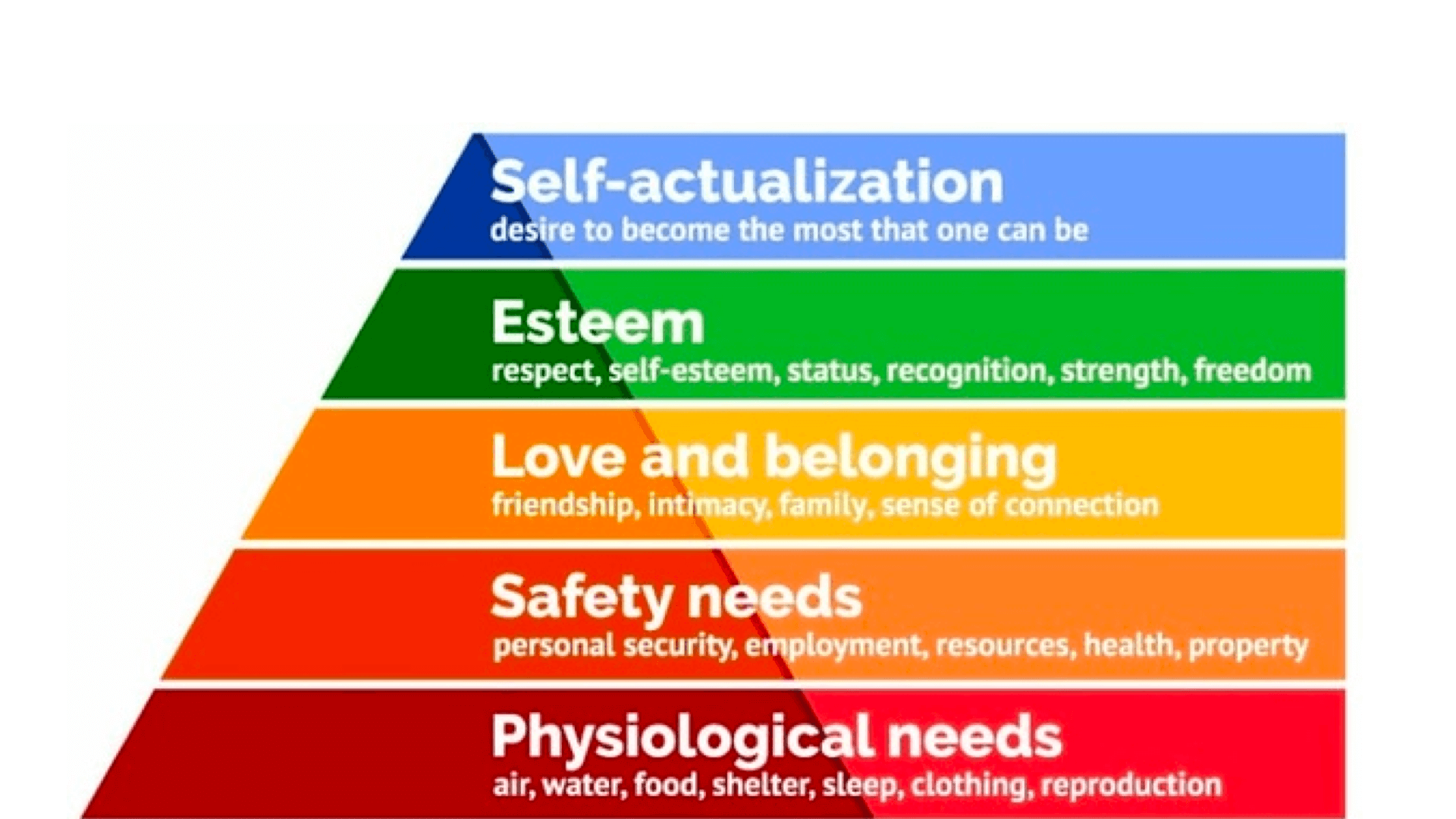
Who knows what this is? Maslow's Hierarchy of Needs. Good, okay. Look at this and think about where we are right now. First, we want to make sure that we and the people we love and others have these physiological needs met. Look how low down this base pyramid safety is.
Now, who knows that when you write an email to a colleague or a client, or if you are the client, back to a vendor or something like that, and you need a response on something, if a day goes by, what happens to your safety? What happens to that feeling of security? That uncertainty that starts tickling you on day 2, day 3, what if things are depending on you? What if other people are counting on you? What happens to that? What happens if you need a shipment to come for something important?
Your mom is sick, and she will probably have her last birthday, and you've ordered something really special. Do you care about when that's going to arrive or if it's going to arrive on time? You better believe your ass you do. This is more about safety than some kind of customer service issue. This happens all day long. You need to understand their feelings. See if you can spend some time in your heart understanding those feelings and then be able to communicate to that.
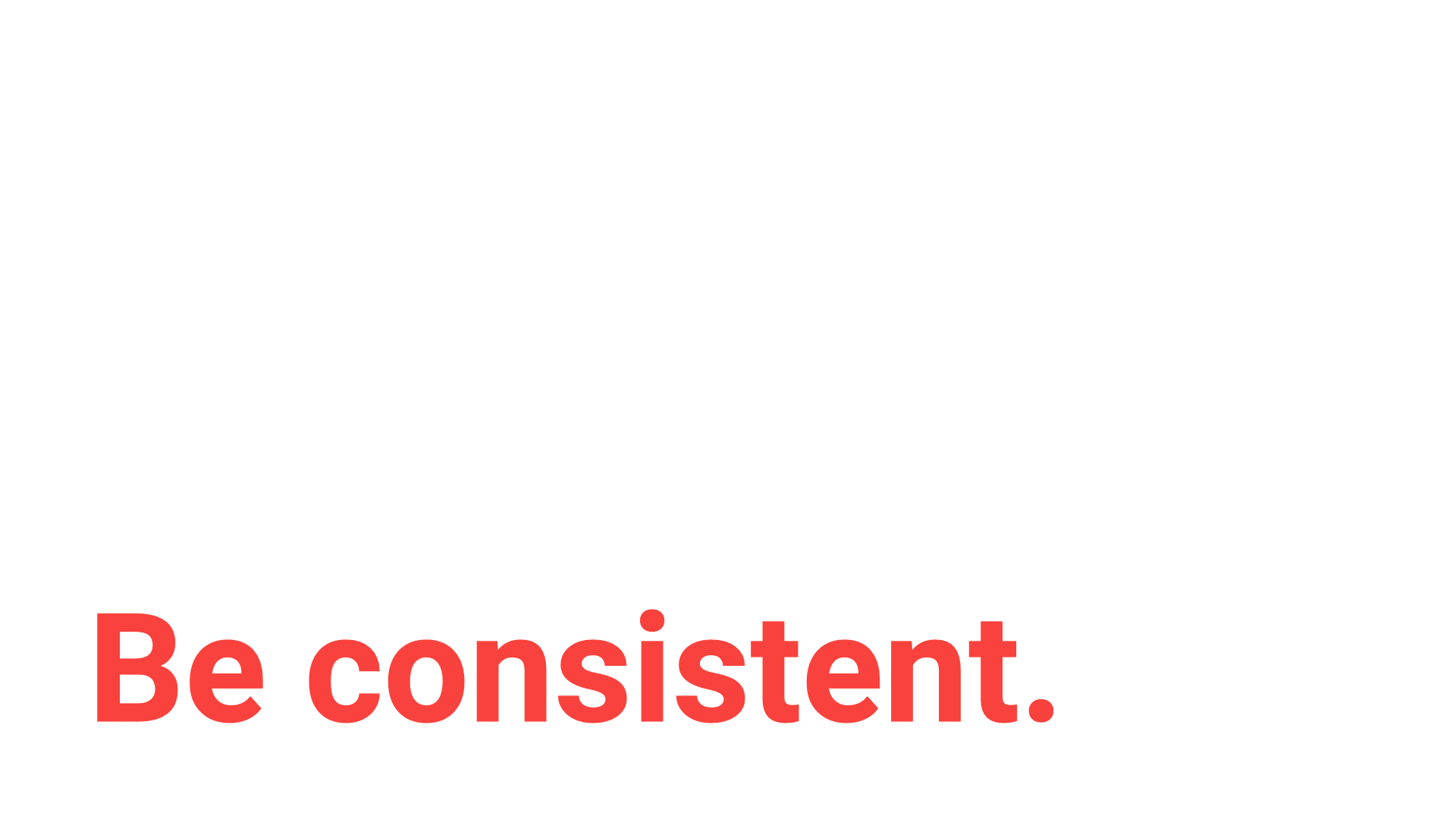
When we are consistent,

when you try listening,
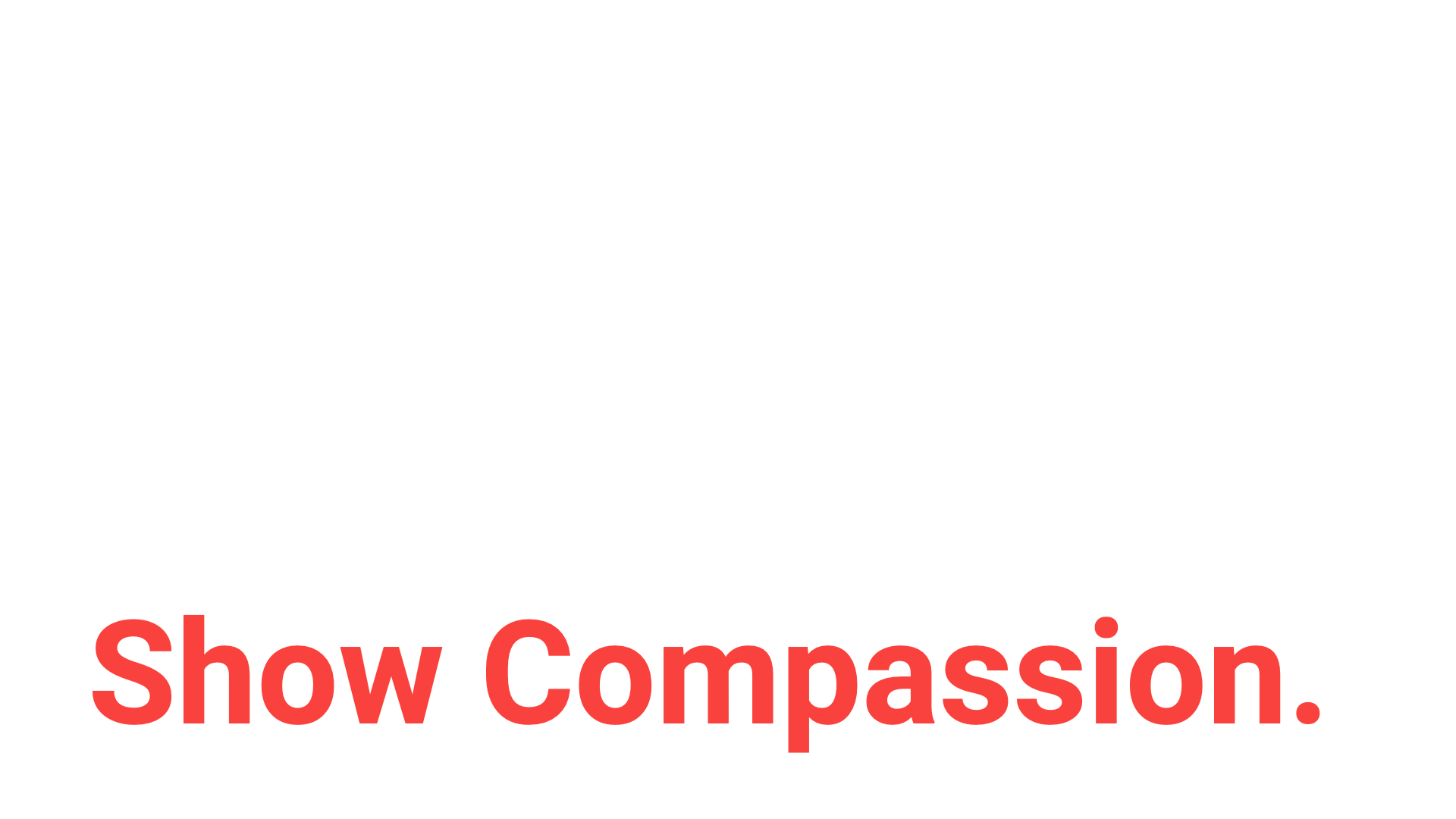
when we show compassion,
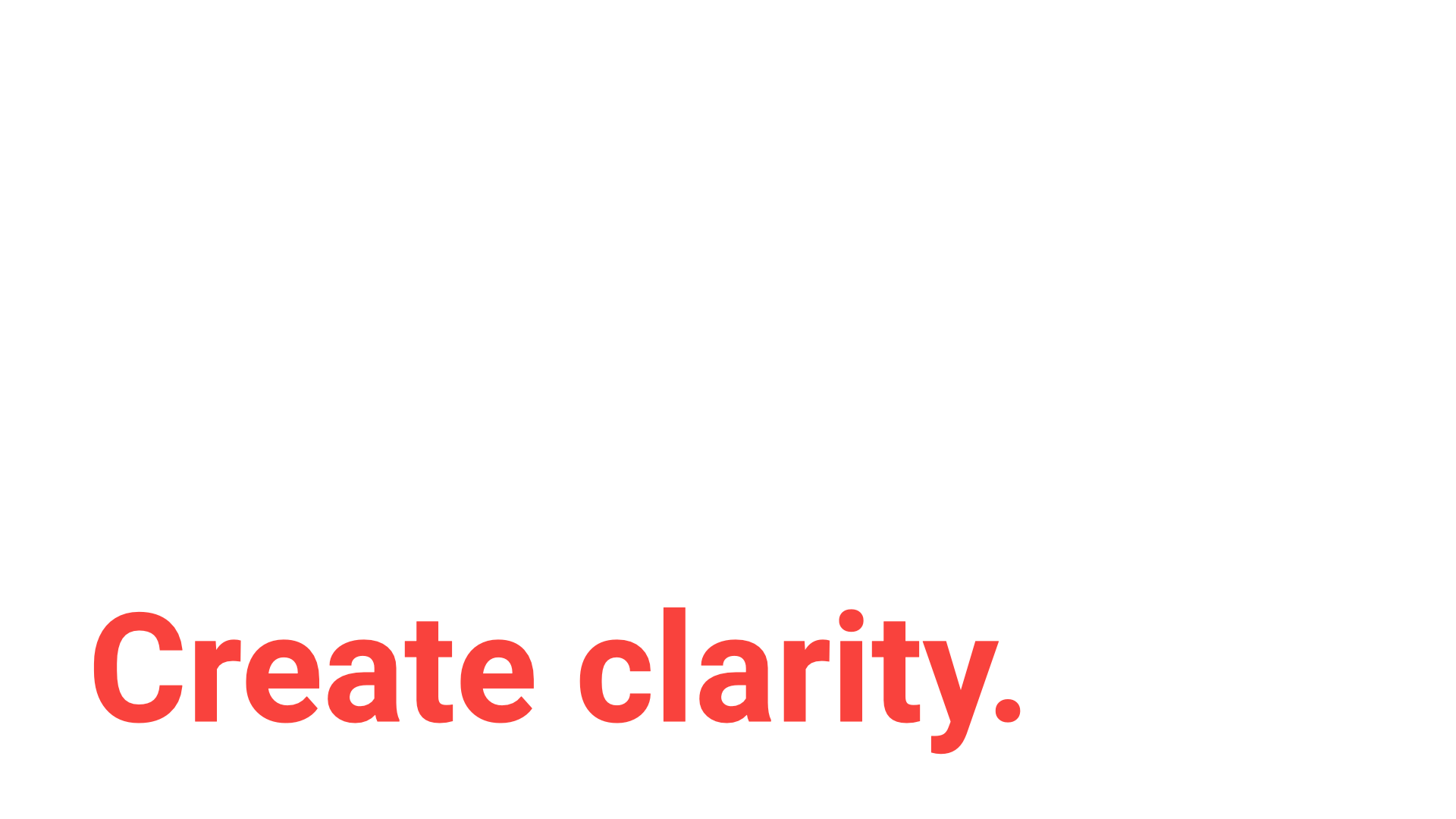
when we create clarity,
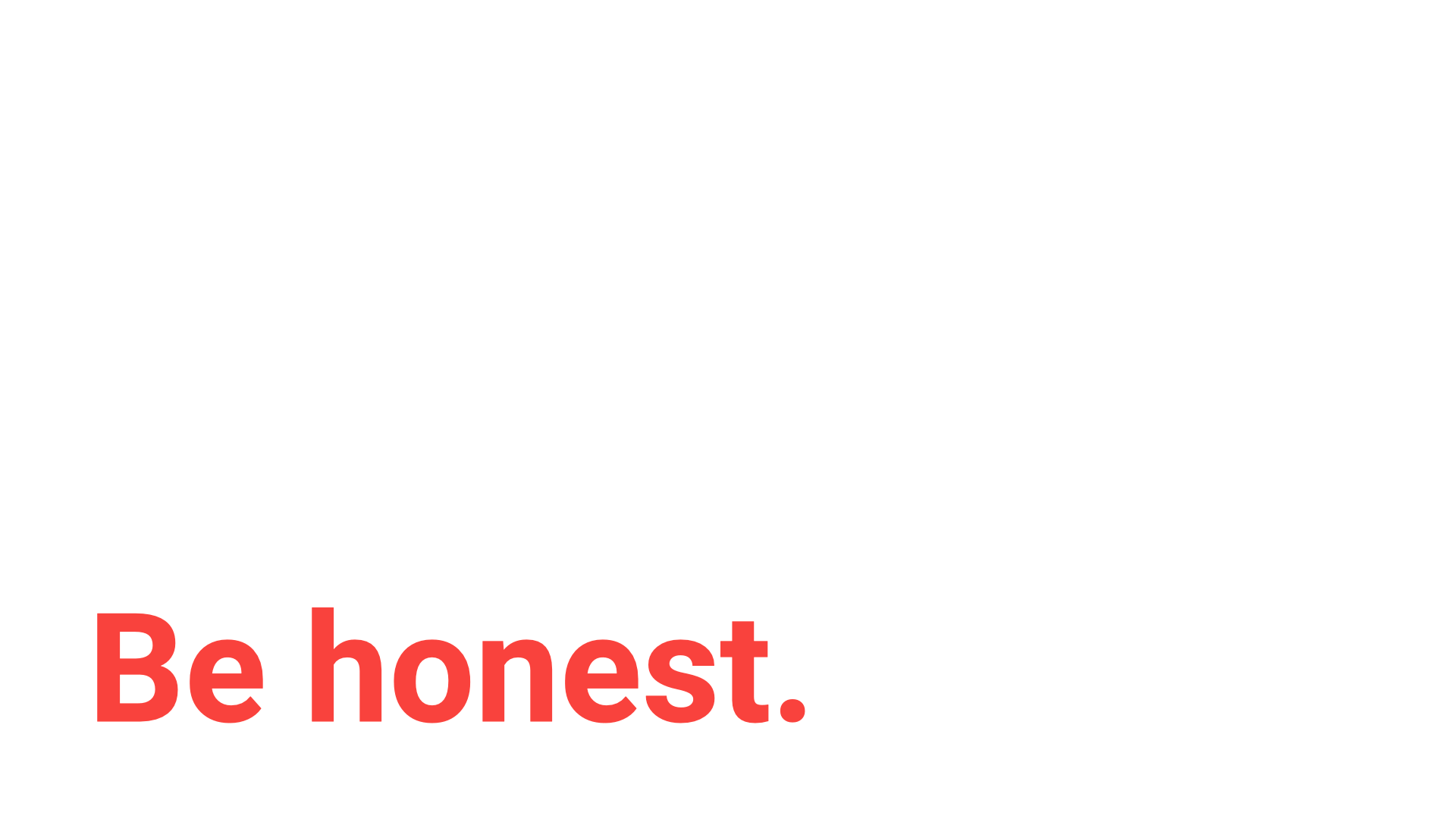
when we are honest,

when we stay curious, with our own emotions, and then with other people, when we do all these behaviors; this is how you get functional. This is how you get relational. This is how you start communicating in your emails as though you give a shit, and I know all of you do.
So whatever your boss told you to send, and you think it doesn't feel right, stand your ground. Tell him what you've learned here, go and do some other research and say, no, that doesn't feel human, that doesn't feel right, and I'd like to do this. Take a chance on me. I want to show that if we can connect relationally, oxytocin is released, and we will create a better, more creative, more powerful bond with our customers, and we will develop greater loyalty.
So one of the stories I want to tell you about real quick is when I worked as a chief creative at Relay Foods, it was an online grocery. About a year and a half into our work, we saw numbers continue to go up, and we were trying to figure out who are the customers have the greatest lifetime value. Who are you?
We had this weird metric for all of them; they all had a mistake in their first order. I'm sorry, that doesn't make sense. It does not compute. Well, it turns out, that means that they had an experience with customer service. It means that they got to experience our effective customer service. "I'm so sorry, Lisa, that your avocado was demolished when it got to you. It was gross, and I know we blew it. Would it be okay if I brought you another couple?". "Sorry, what did you say? Of course it would".
That's insane. That's amazing. Then, boom, she's hooked because she was heard. It was mirrored back to her what she was experiencing, how shitty that experience was, and then we did something about it.
We took action. Our apology is not enough. Action is an apology. Then, we develop loyal customers. You can do this too, by responding to your mistakes, by replying to the feelings that people are having, getting to know them, all of these things. We know this already. If we acted the way we do in our email marketing lives on Tinder or Hinge or any of those things, we'd get people to swipe left all day long. All-day long. It's left, right?
So, be human, show up, and stay curious.

I have no idea why he did this, but this is beautiful. One more time, this is so good. Push it out, there it is.
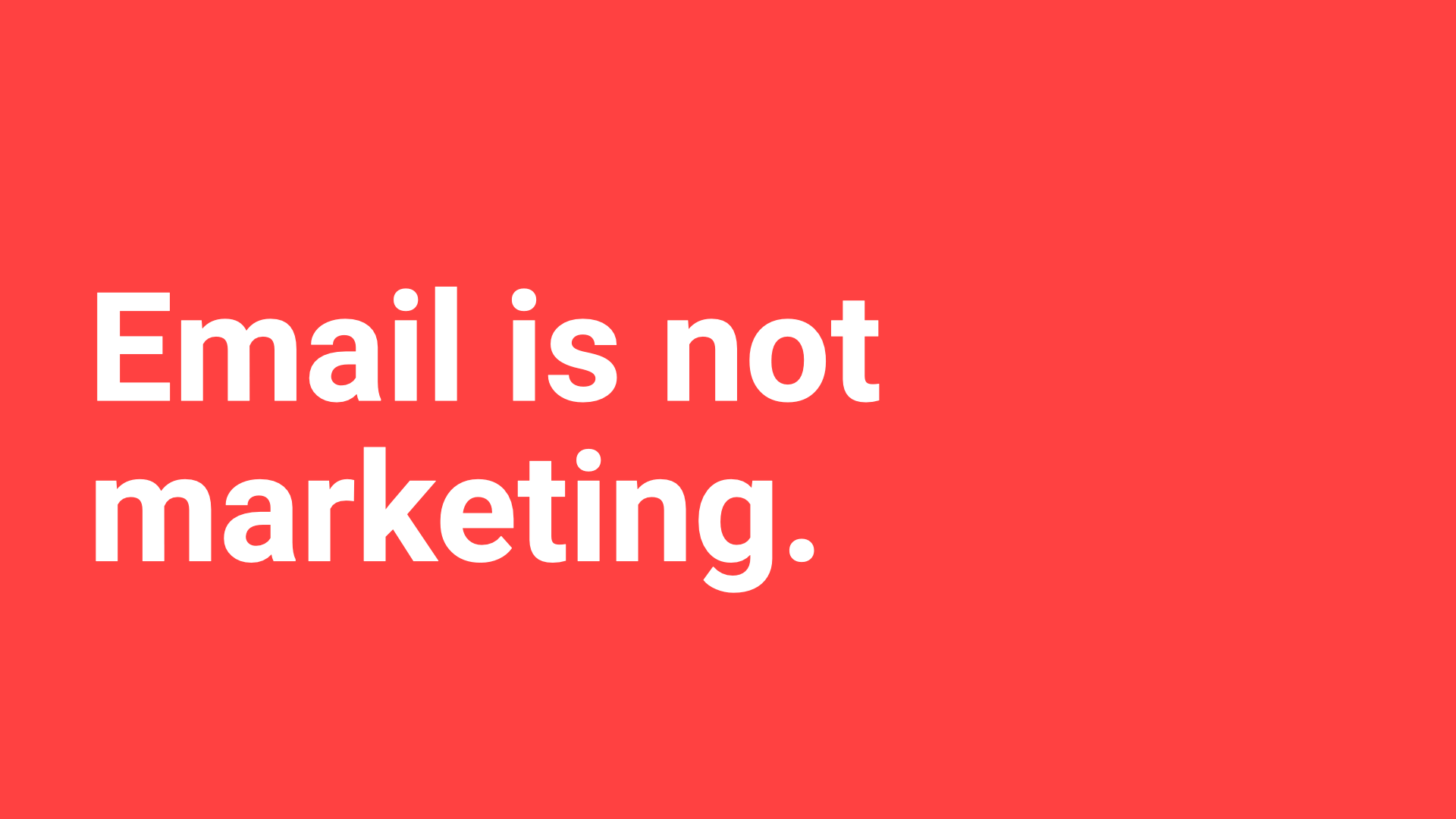
Listen, email is not marketing.
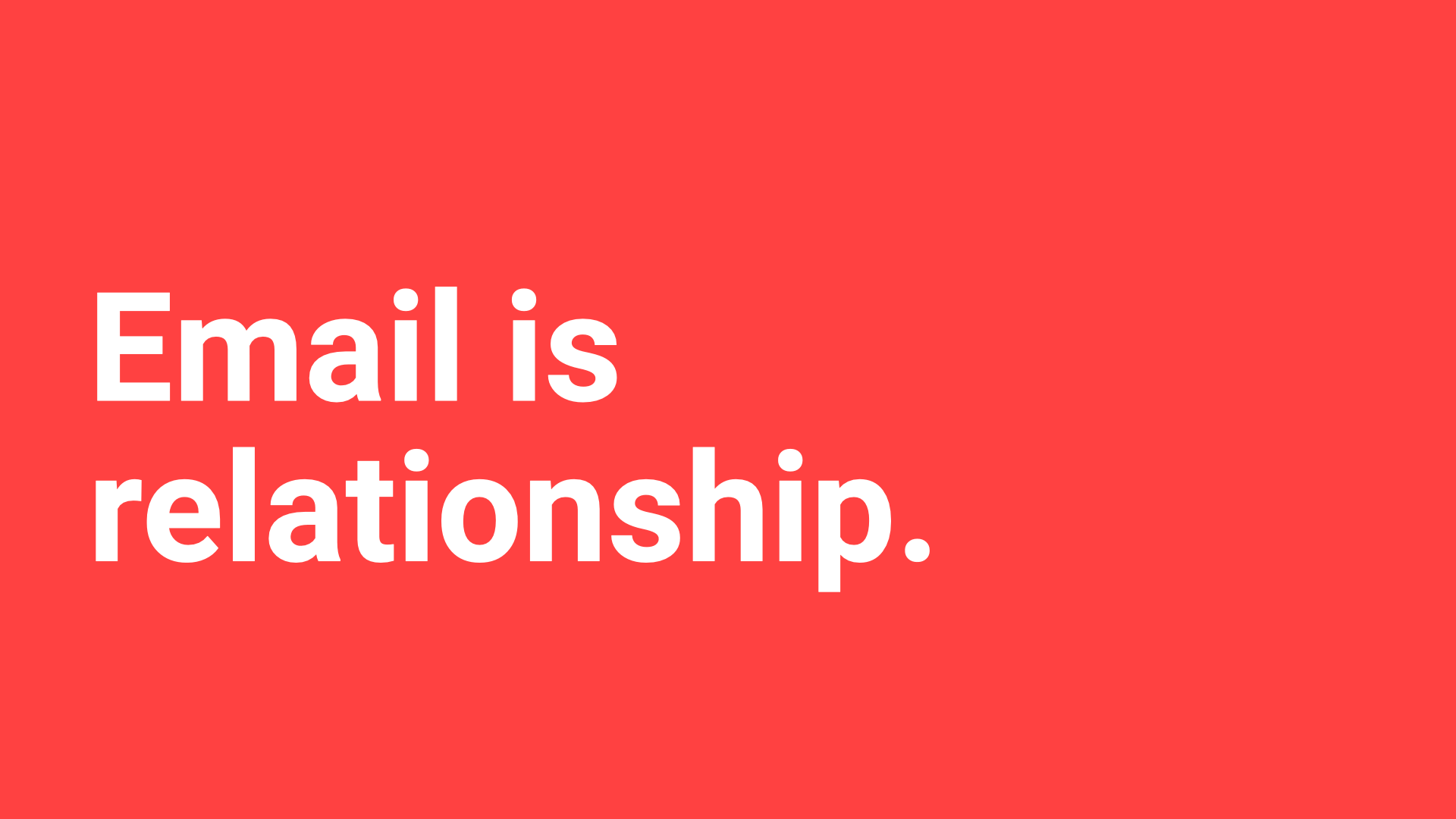
Email is relationship designed.
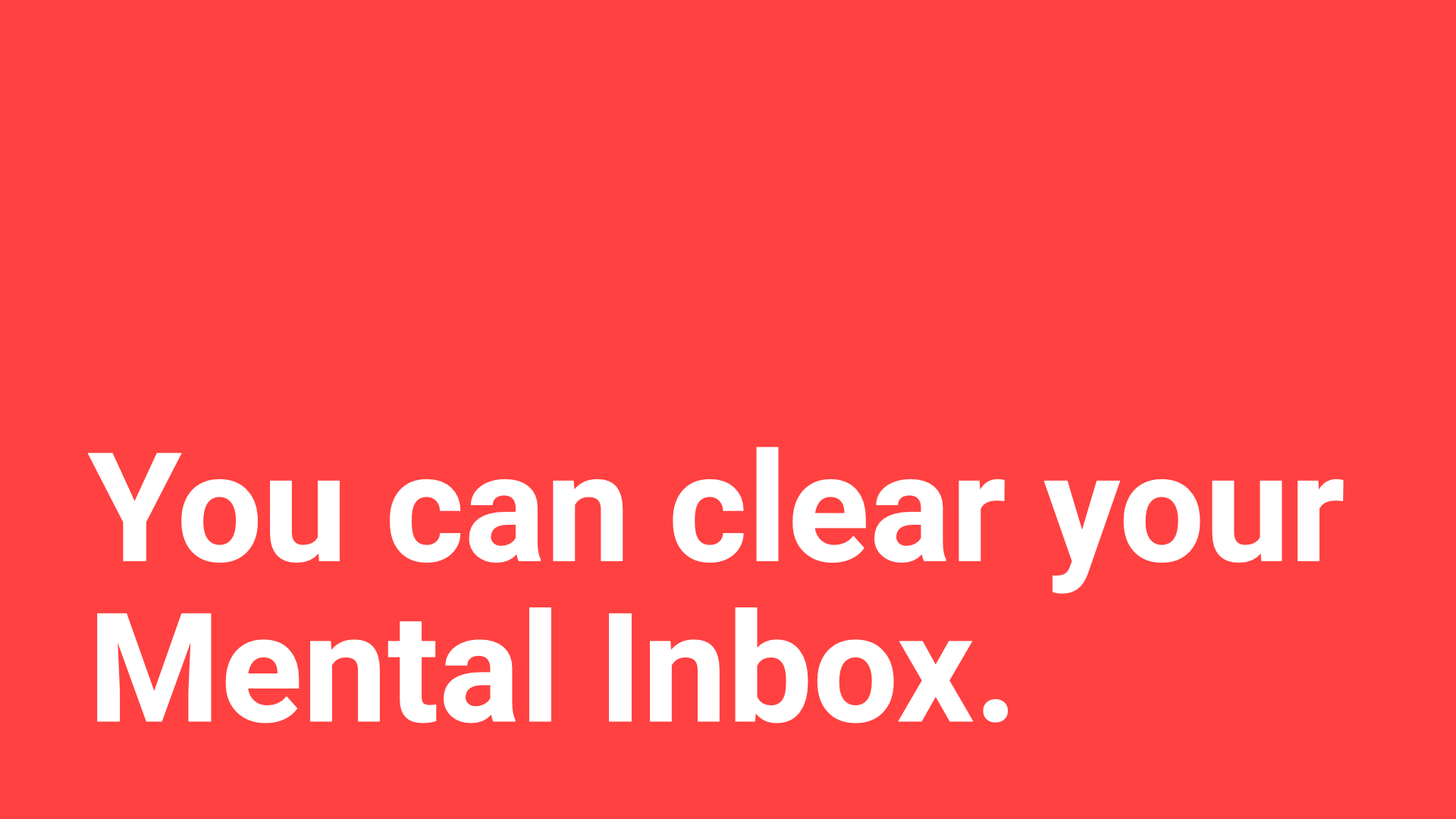
You can clear your Mental Inbox.
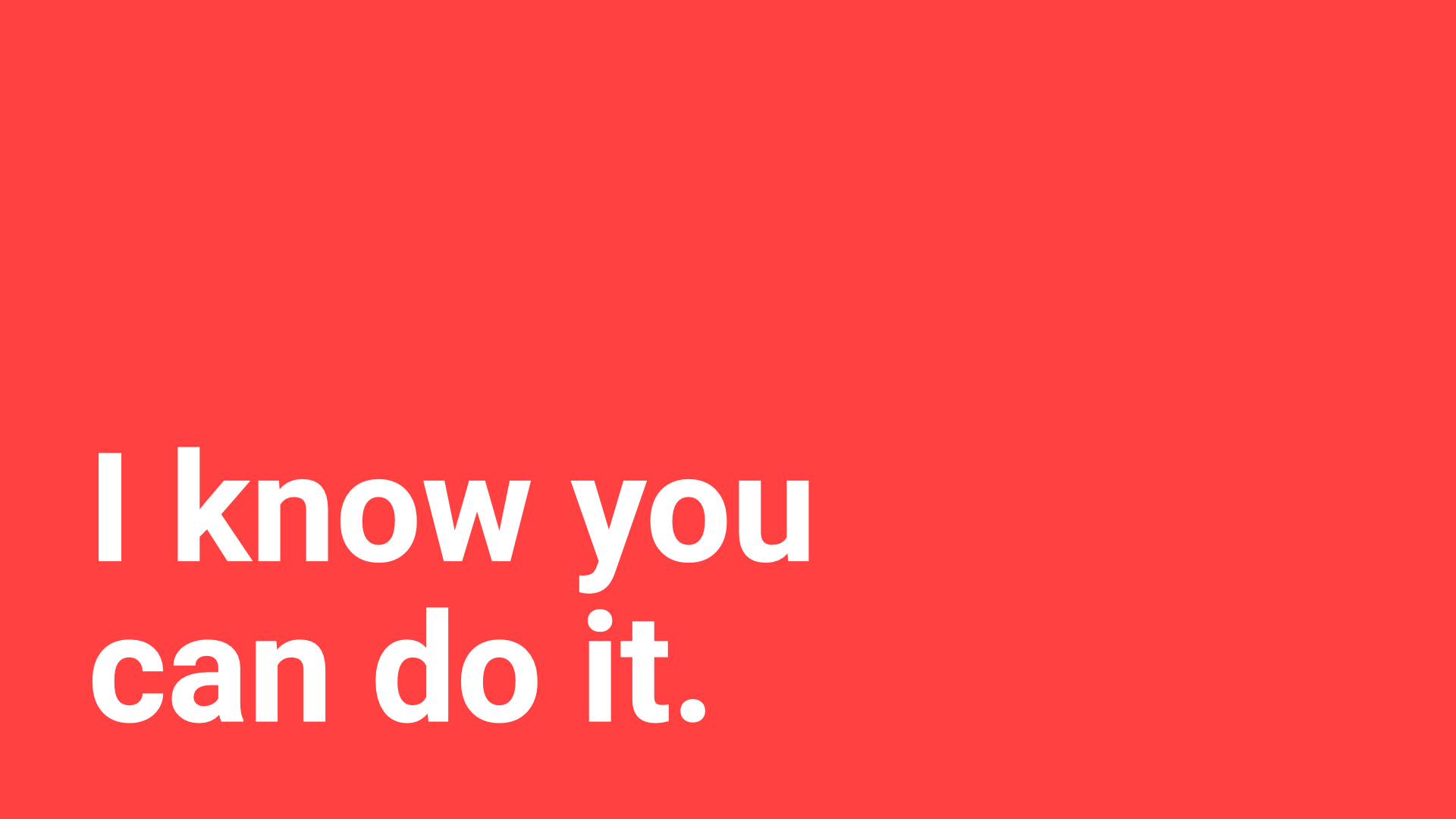
I know you can do it.

Be really good.
Thank you. I appreciate you. You have done a great job.
Mike Nelson: So before he walks off, stay up here. I've known Matthew for five years. I knew him during alcoholism, and there is a 100% difference between him as a man and as a friend.
We're here because we love you guys, but we're also here because we love each other, in a bro kind of way. Now you can join our cult. We hope you know how much we love you.
